Objects
Worn, torn, crafted, mended, stored, owned, suffered, hidden, traded, gambled and adapted by convicts – these convict-era objects and archaeological artefacts found at the Hyde Park Barracks and The Mint (Rum Hospital) are among the rarest and most personal artefacts to have survived from Australia’s early convict period.
Published on
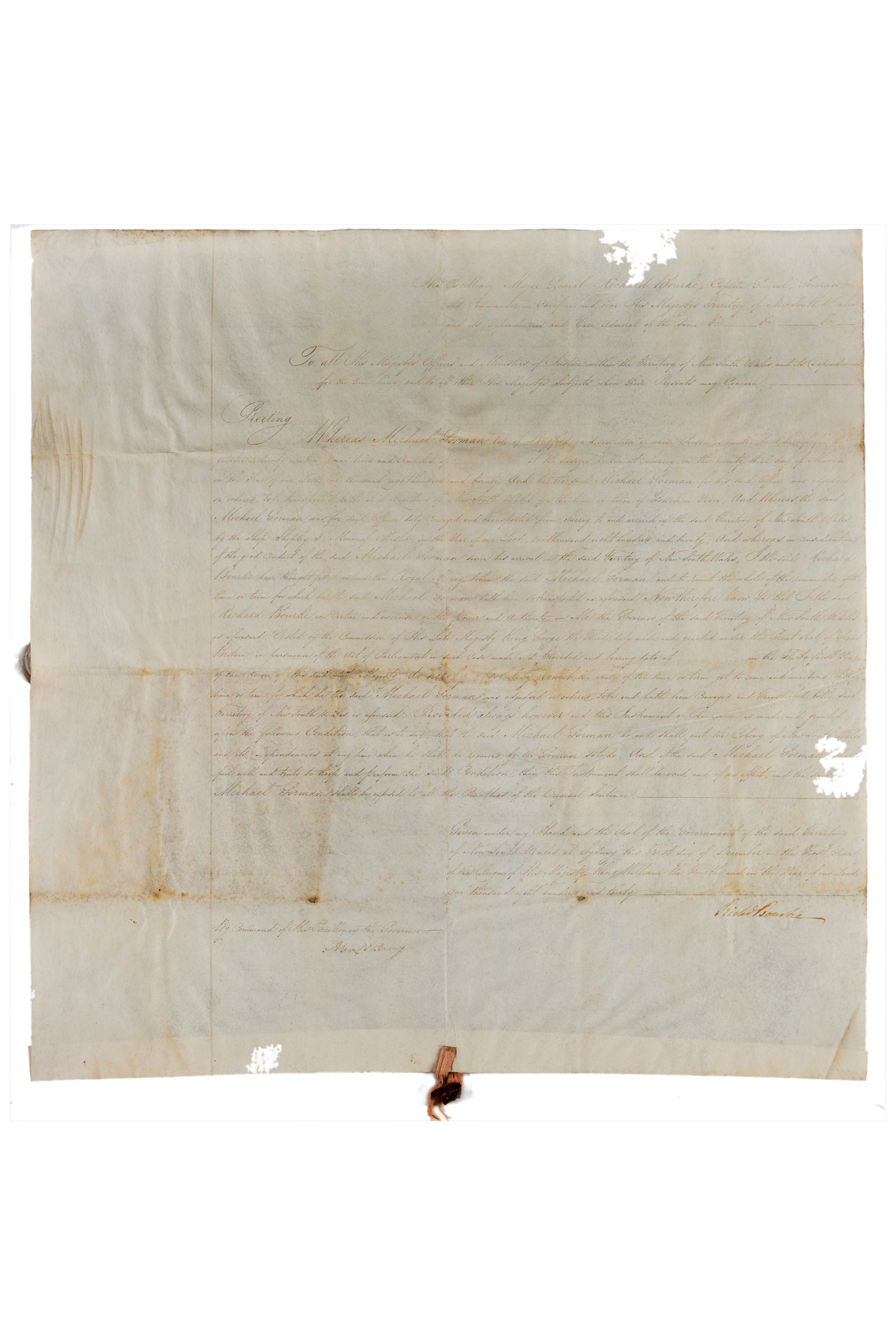
Convict Sydney
Absolute pardon
Convict constable Michael Gorman earned this absolute pardon in 1830/1832, for his service in the capture of the notorious bushranger John Donohoe
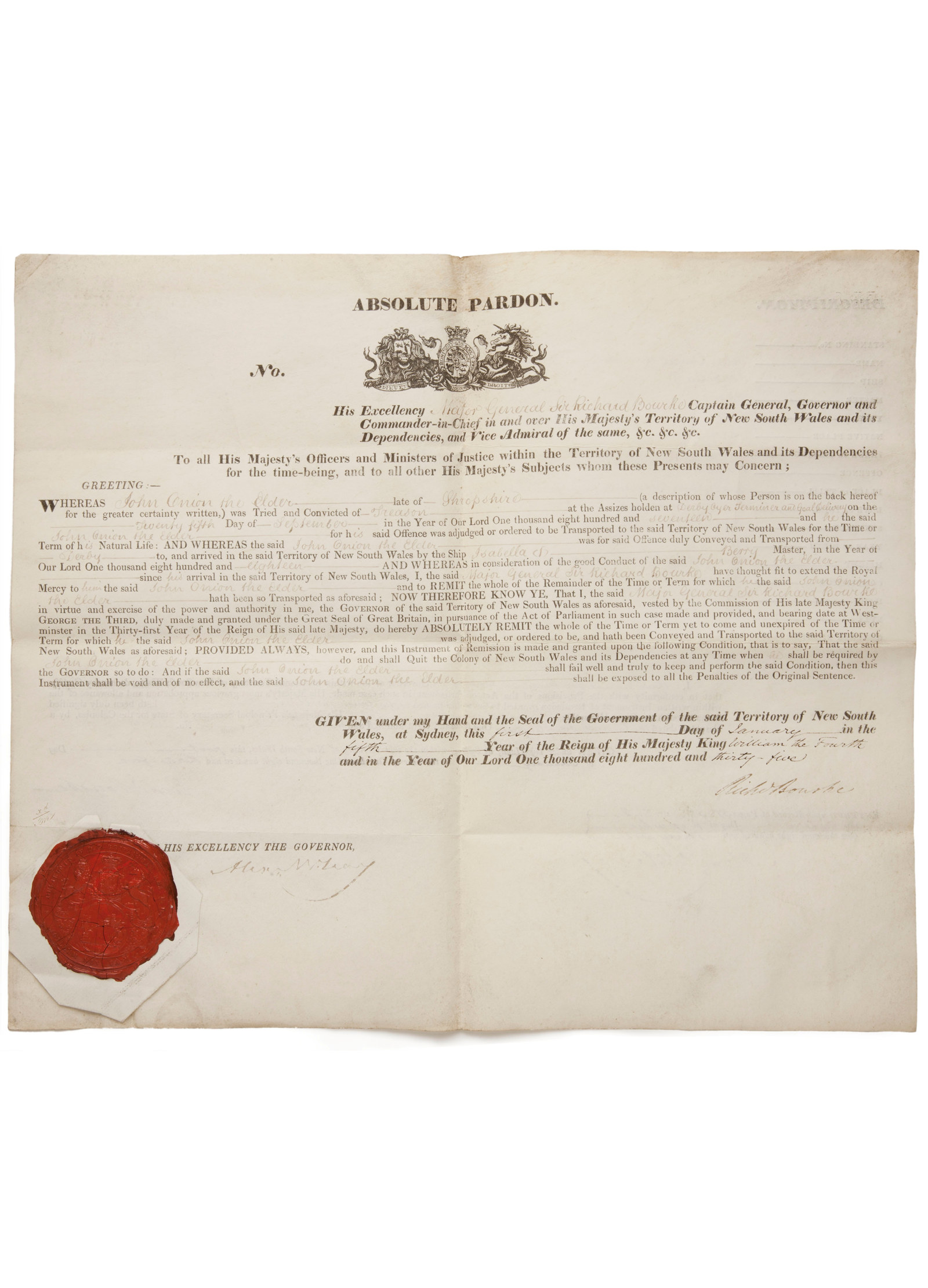
Convict Sydney
Absolute pardon
It must have been a proud moment for John Onion when he received this absolute pardon document in 1835
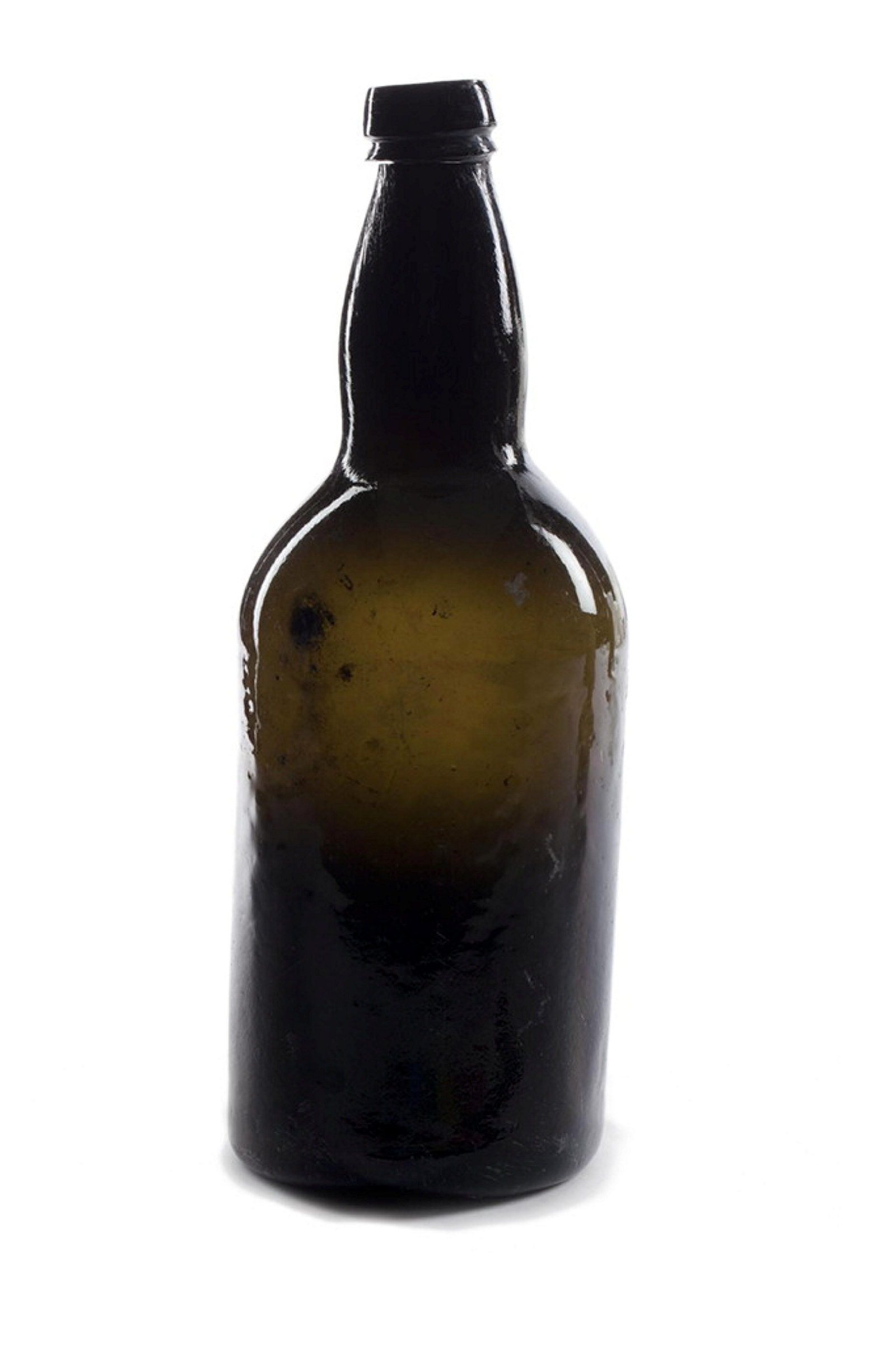
Convict Sydney
Alcohol bottle
Recovered from beneath the ground floor of the Hyde Park Barracks, this glass bottle suggests that, despite the rules, convicts smuggled alcohol into the Barracks
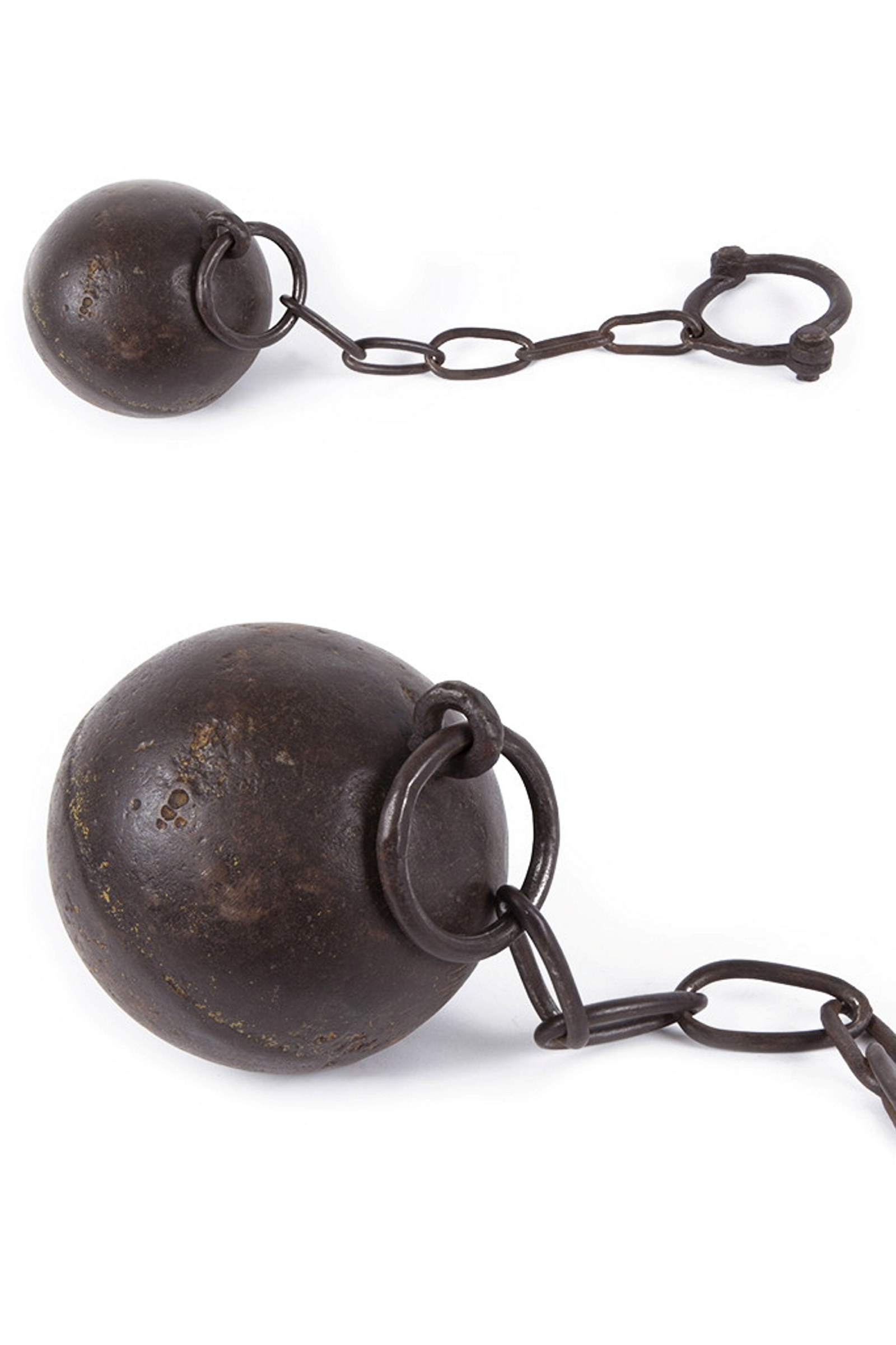
Convict Sydney
Ball and chain
1820s–1840s: Known as darbies or slangs in the convict ‘flash’ language, leg-irons came in various shapes and sizes
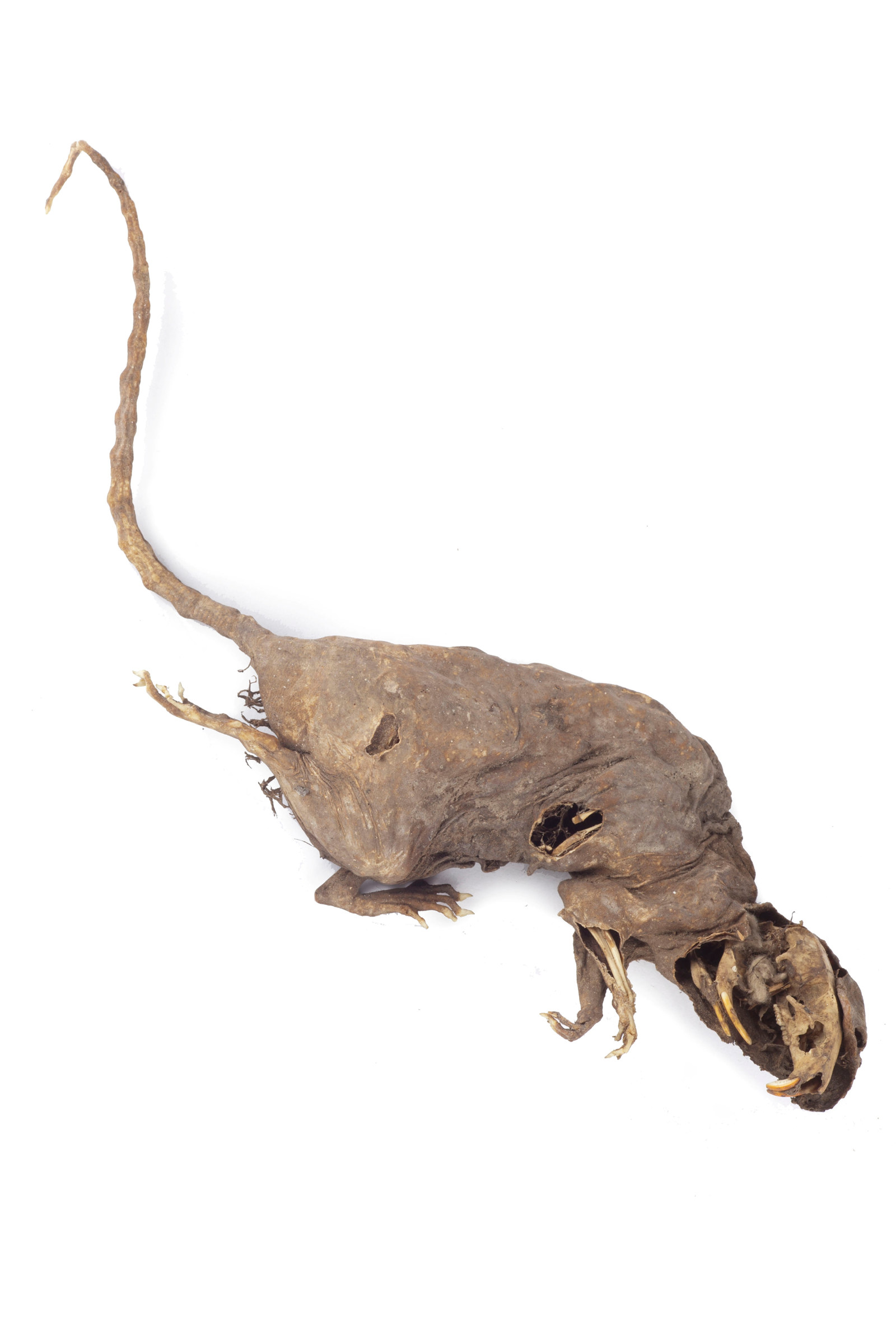
Convict Sydney
Barracks rat
Trying to get any sleep in the wards of the Hyde Park Barracks must have been difficult at times due to the building’s infestation of rats

Convict Sydney
Bible and prayer book
The name written inside the covers, with the year 1837, tells us these books once belonged to an English brass founder named Thomas Bagnall
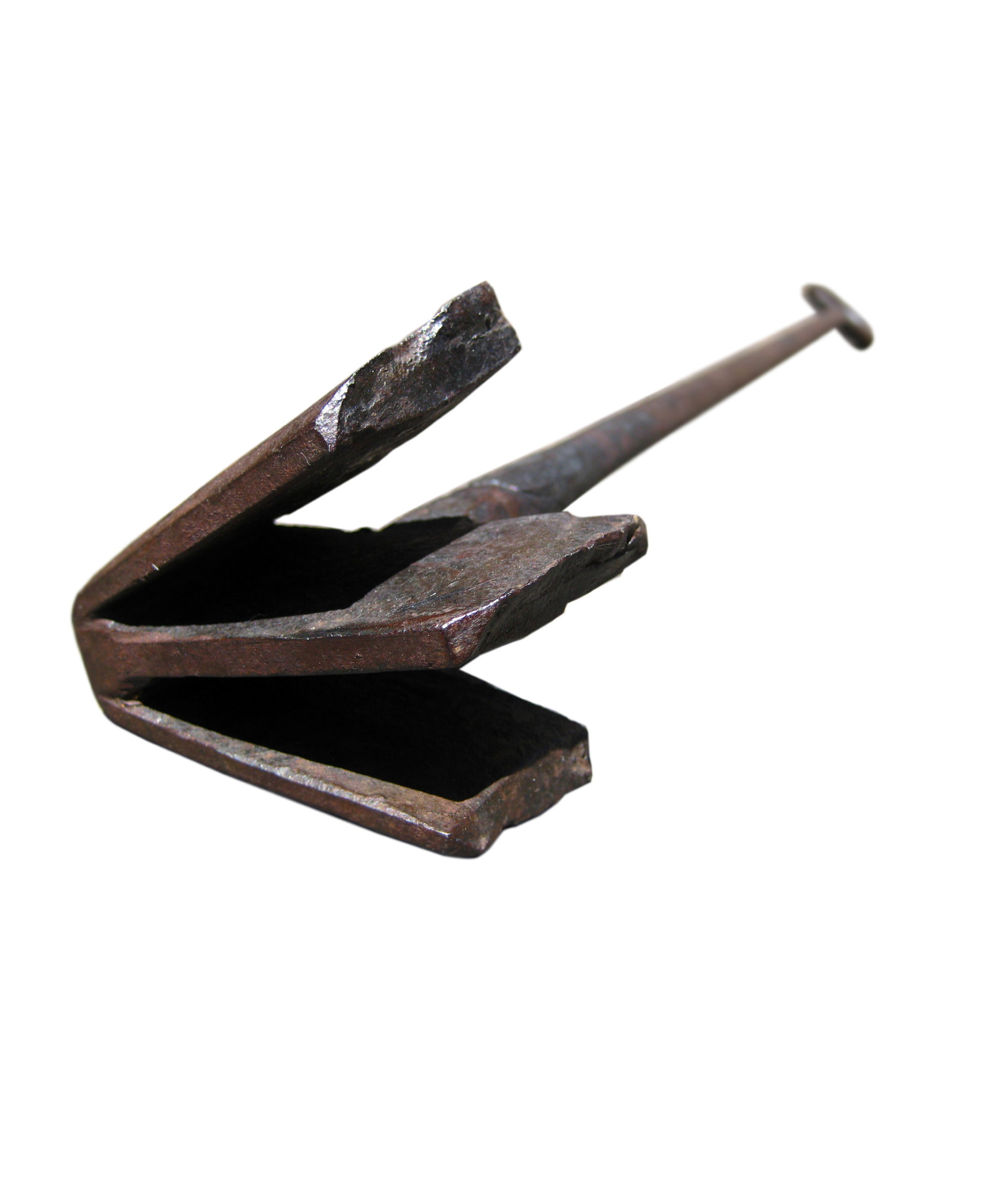
Convict Sydney
Branding iron
Branding irons like this one were used to brand government-owned property livestock as well as items made from timber
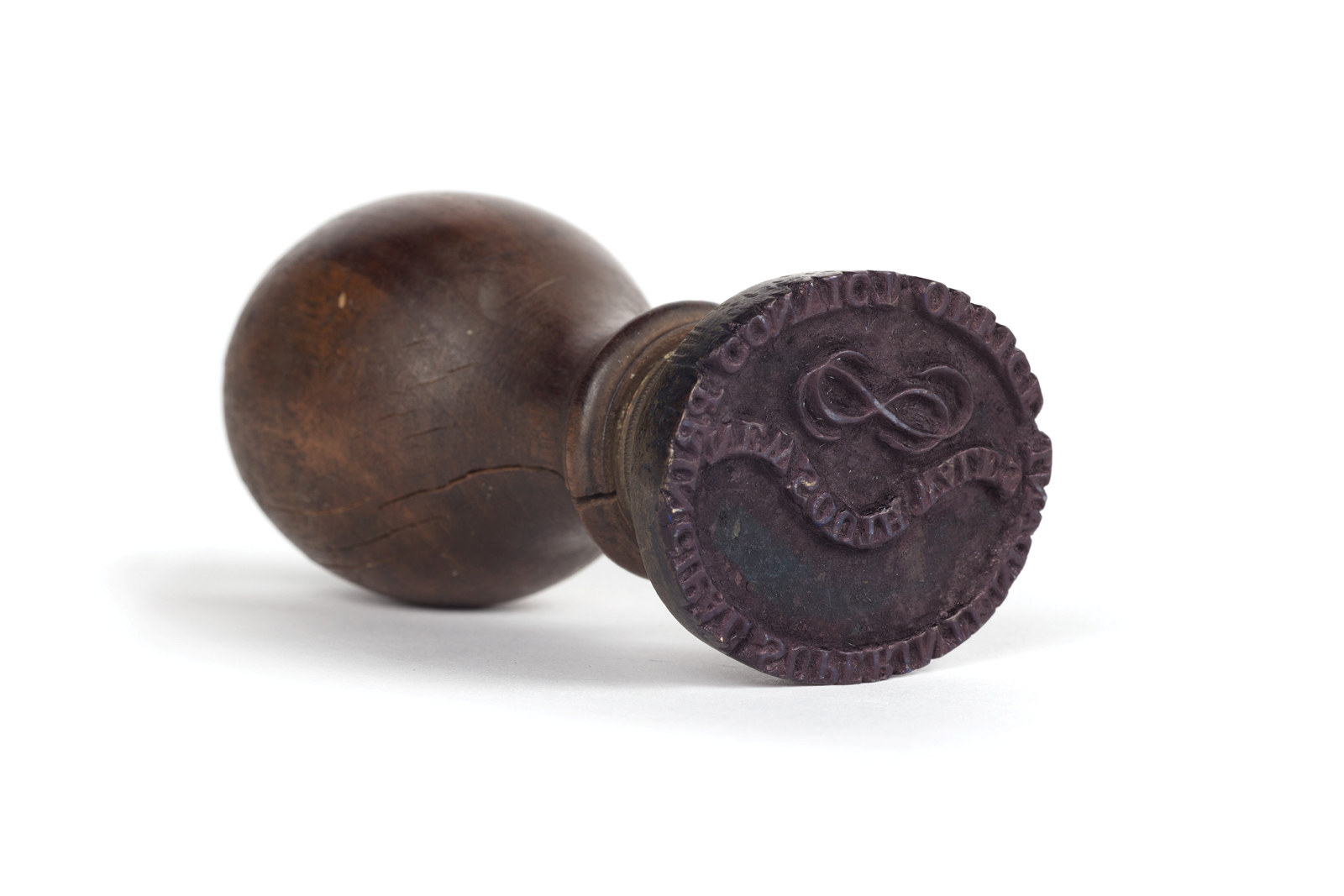
Convict Sydney
Brass stamp
Between 1830 and 1848, the superintendent’s office operated from the Hyde Park Barracks, where this stamp was most likely used on official documents and ledgers

Convict Sydney
Cartwheel penny
This 1797 cartwheel penny was found by archaeologists beneath the floors of the convict sleeping wards of the Hyde Park Barracks
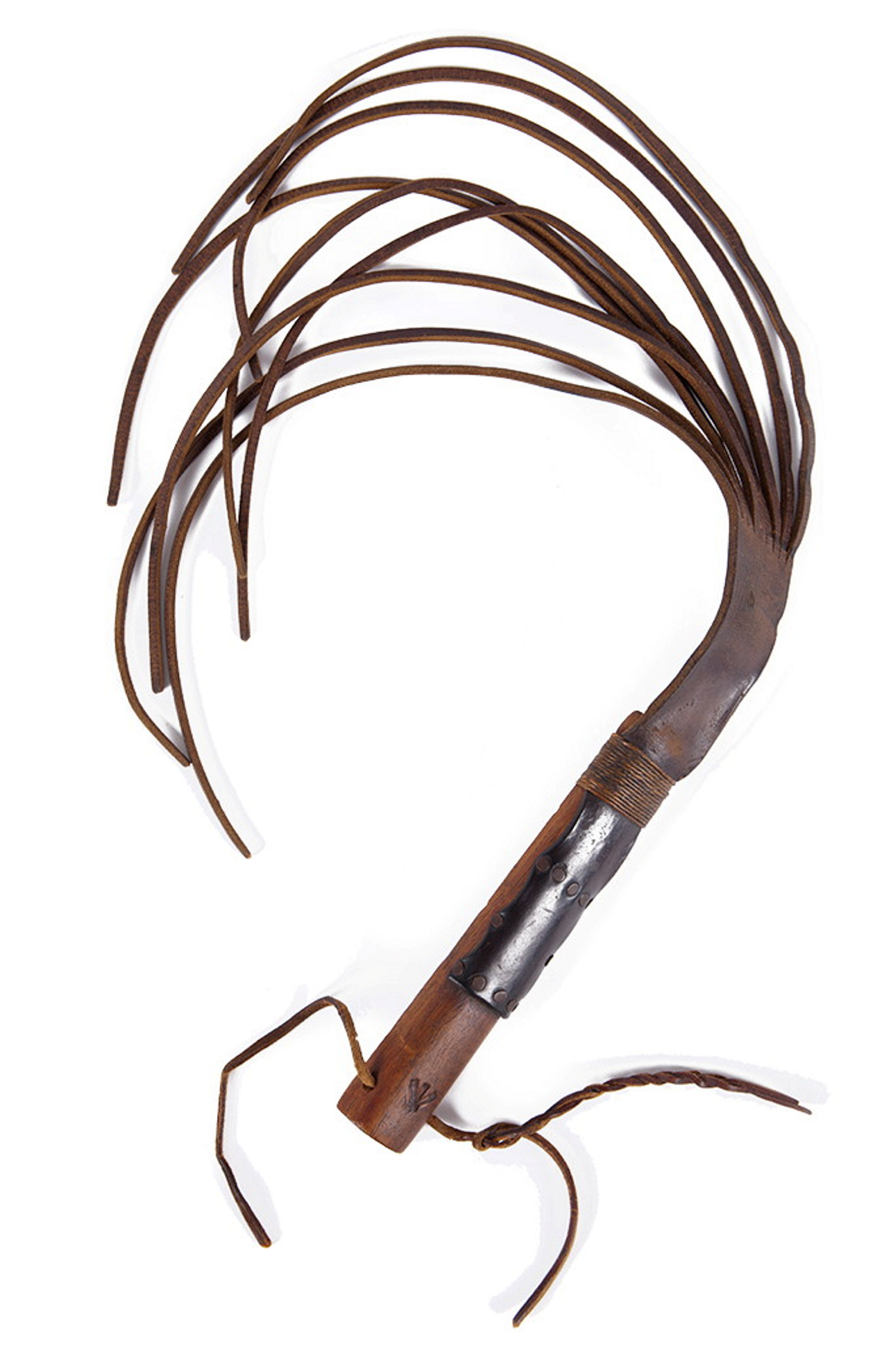
Convict Sydney
Cat-o’-nine-tails
One of the most common forms of convict punishment was flogging (whipping) with a ‘cat-o’-nine-tails’

Convict Sydney
Certificate of Freedom
Certificates of Freedom had to be carried at all times and shown to the appropriate authorities on demand
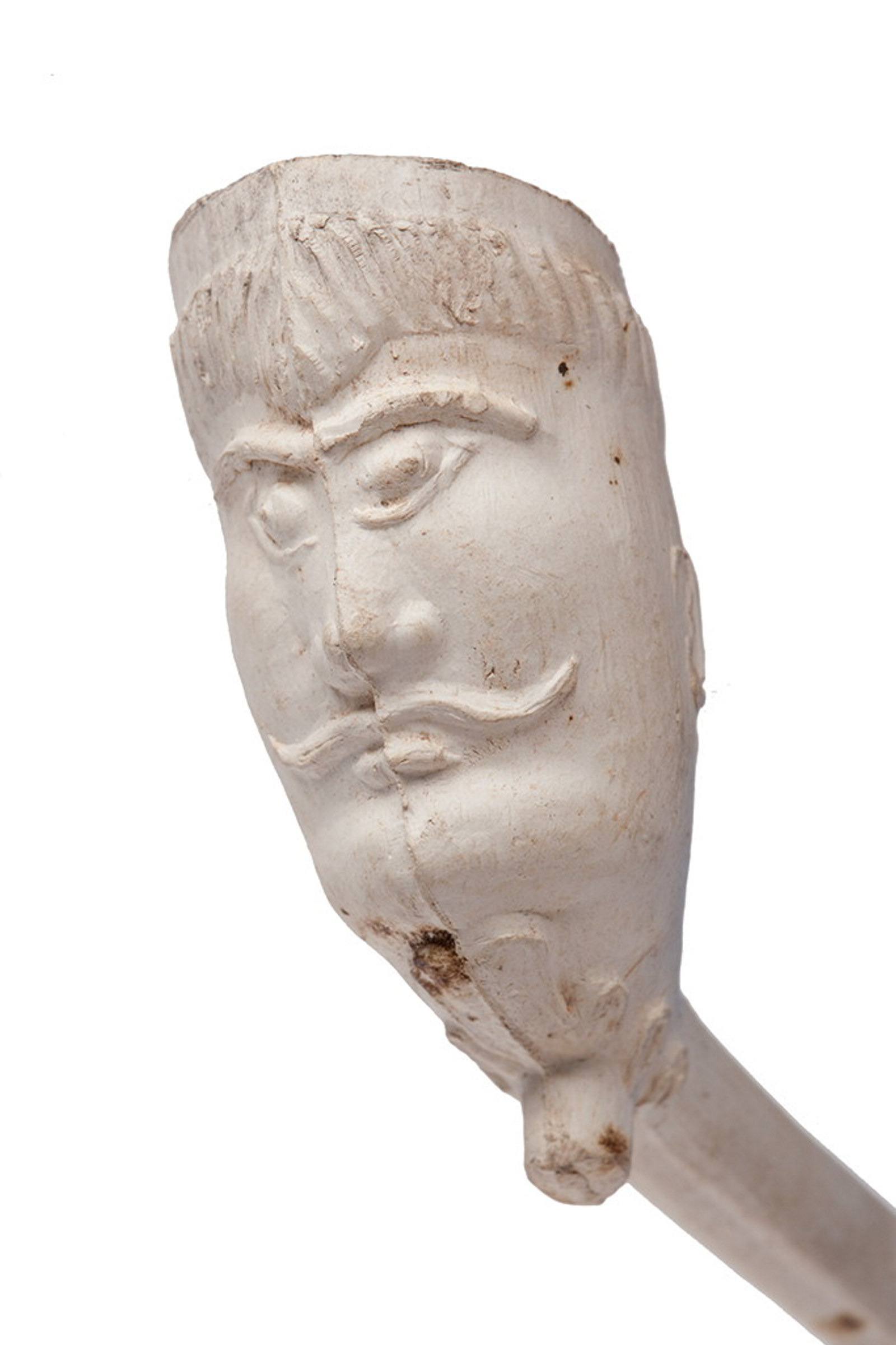
Convict Sydney
Clay tobacco pipe
This tobacco pipe with its bowl in the shape of a man’s head was recovered by archaeologists at the Hyde Park Barracks
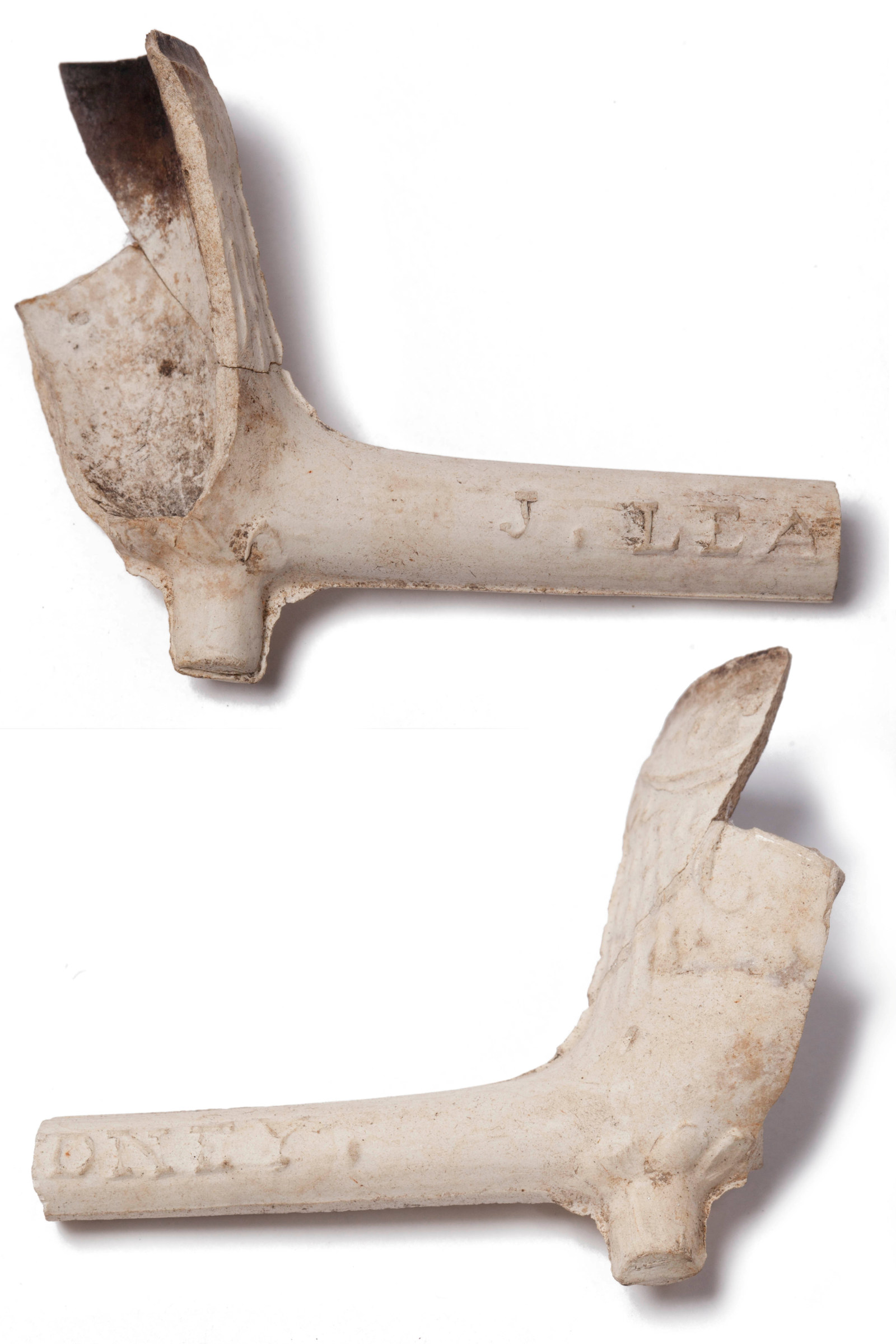
Convict Sydney
Clay tobacco pipe
1,500 fragments of convict-era clay tobacco pipes were recovered by archaeologists from the Hyde Park Barracks

Convict Sydney
Clay tobacco pipes, repaired
Known as steamers to the convicts, these tobacco pipes have been repaired with resin and twine where their fragile stems broke
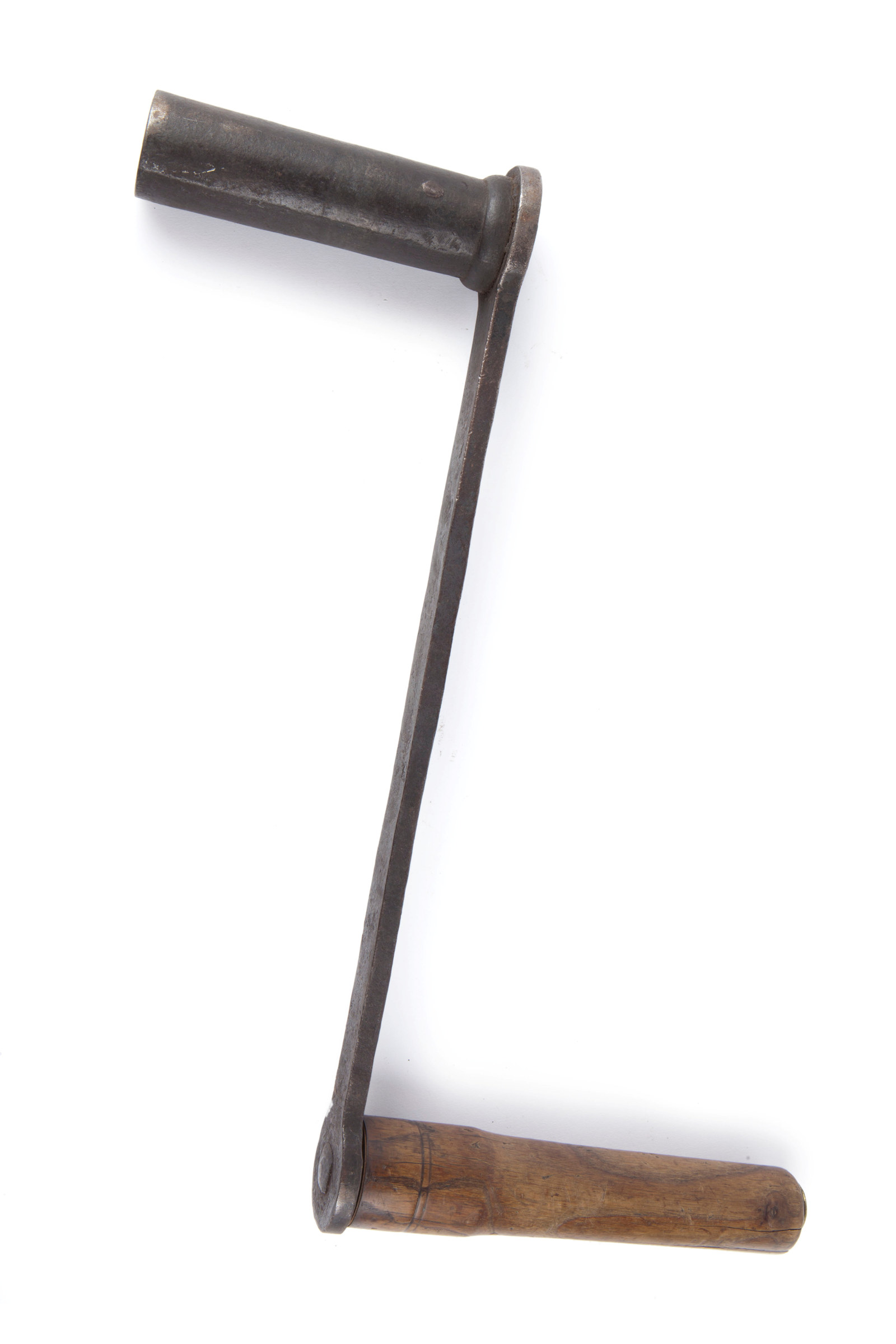
Convict Sydney
Clock-winding crank
This sturdy crank was used for many years to wind the Hyde Park Barracks clock
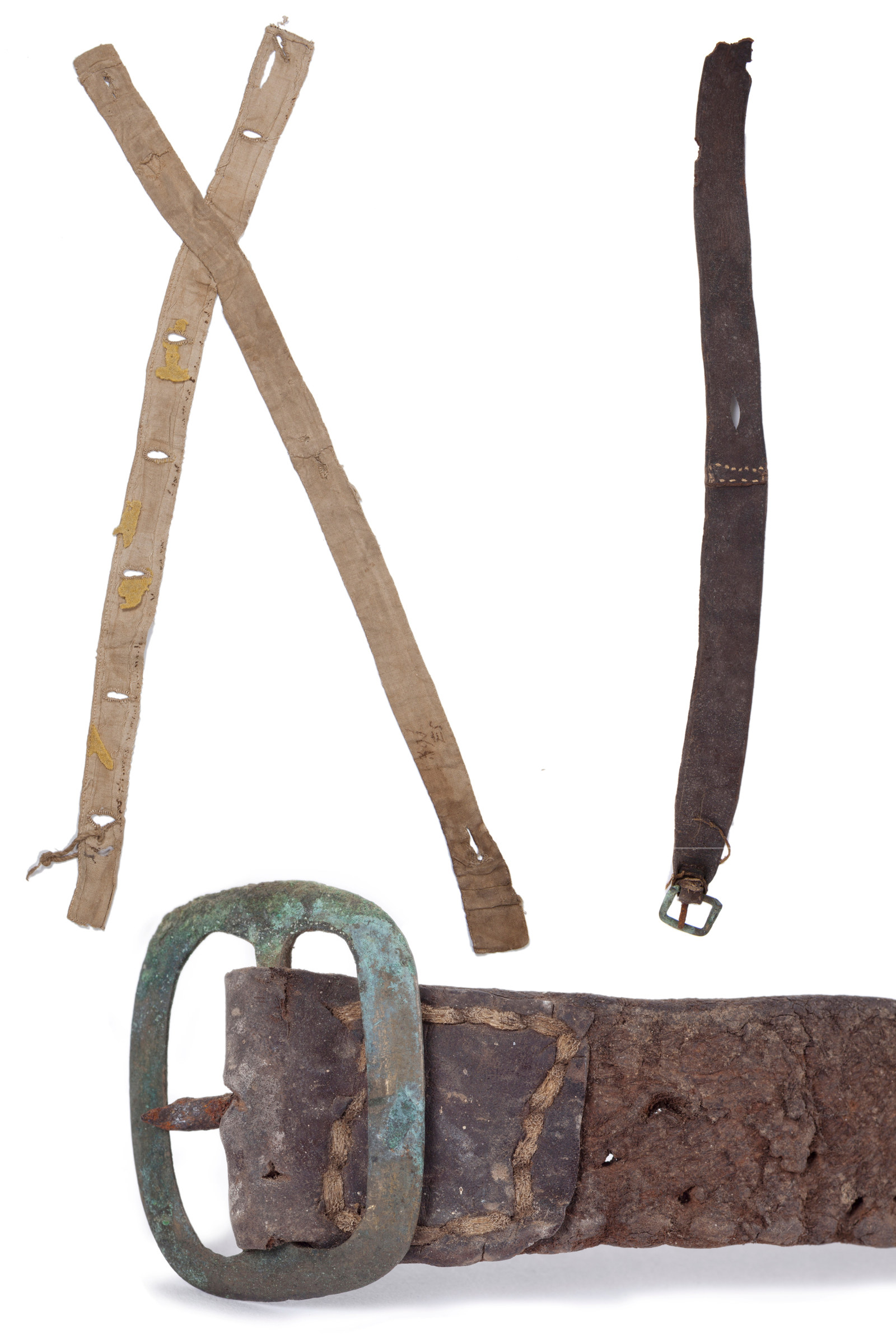
Convict Sydney
Convict braces and belts
Convict ‘slop’ clothing was one-size-fits-all, so some convicts had to improvise ways to keep up their baggy trousers
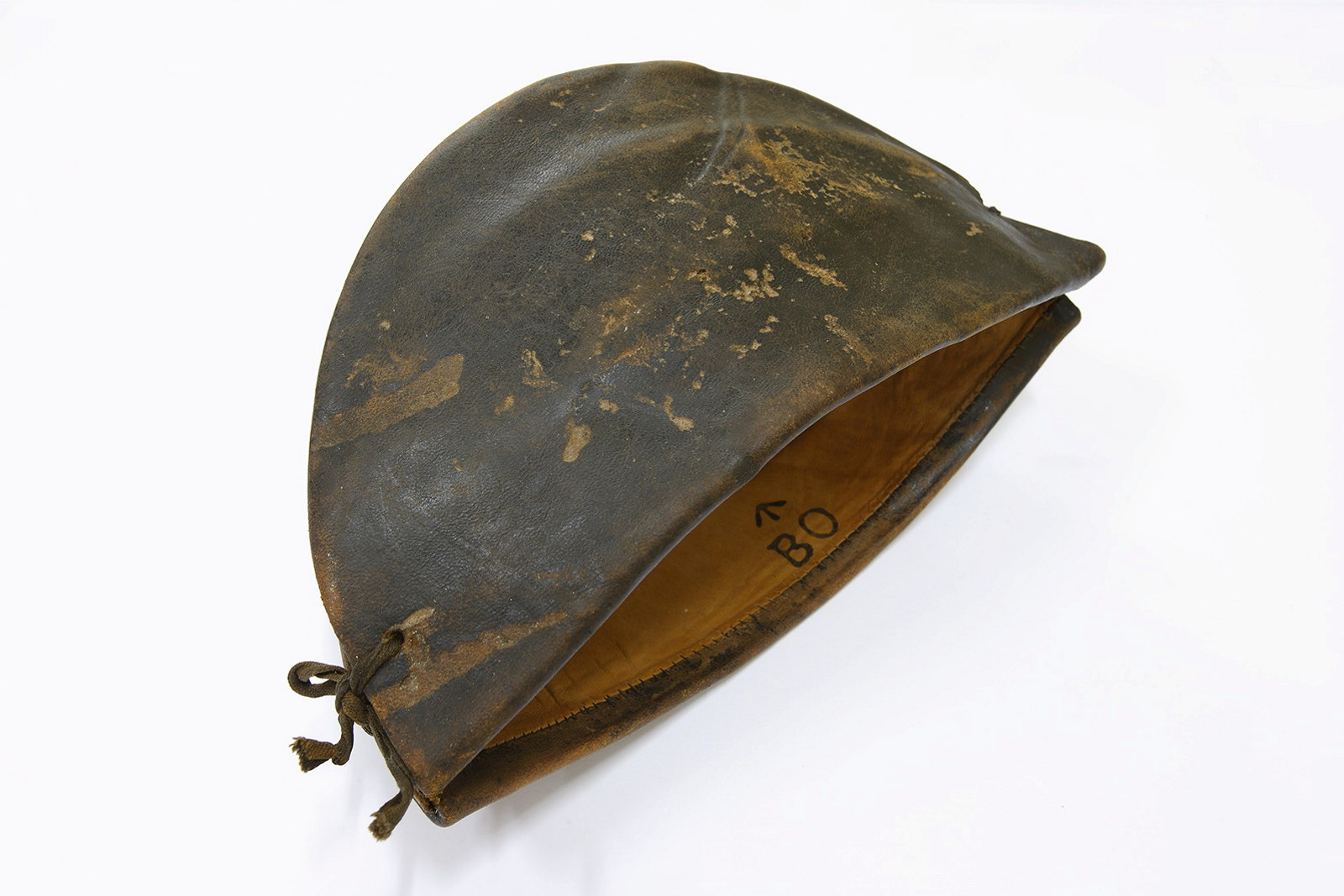
Convict Sydney
Convict cap
A hat was known as a castor or a kelp in the convict ‘flash’ slang language
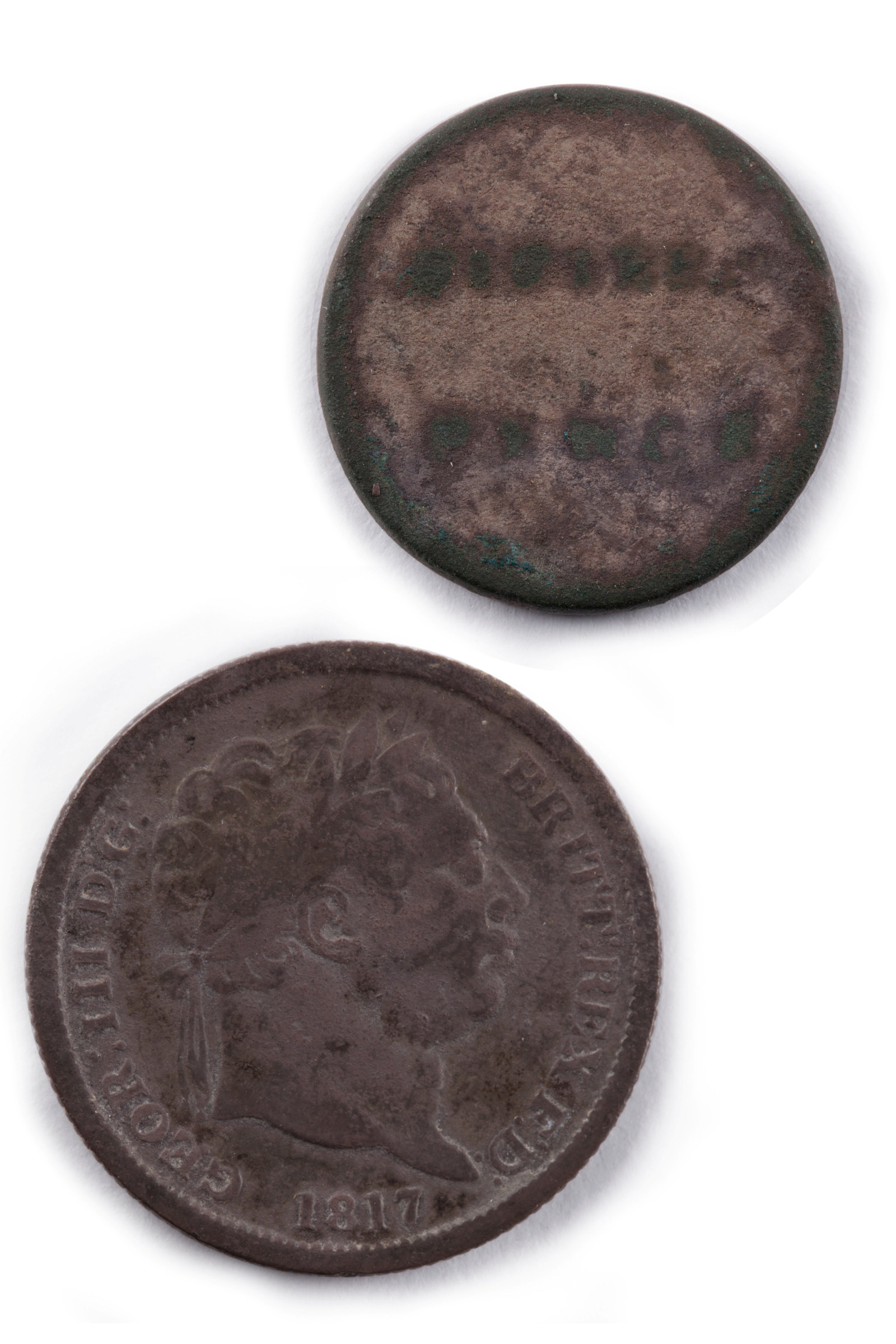
Convict Sydney
Convict coins
This early colonial currency tells us that all kinds of coins changed convict hands at the Barracks
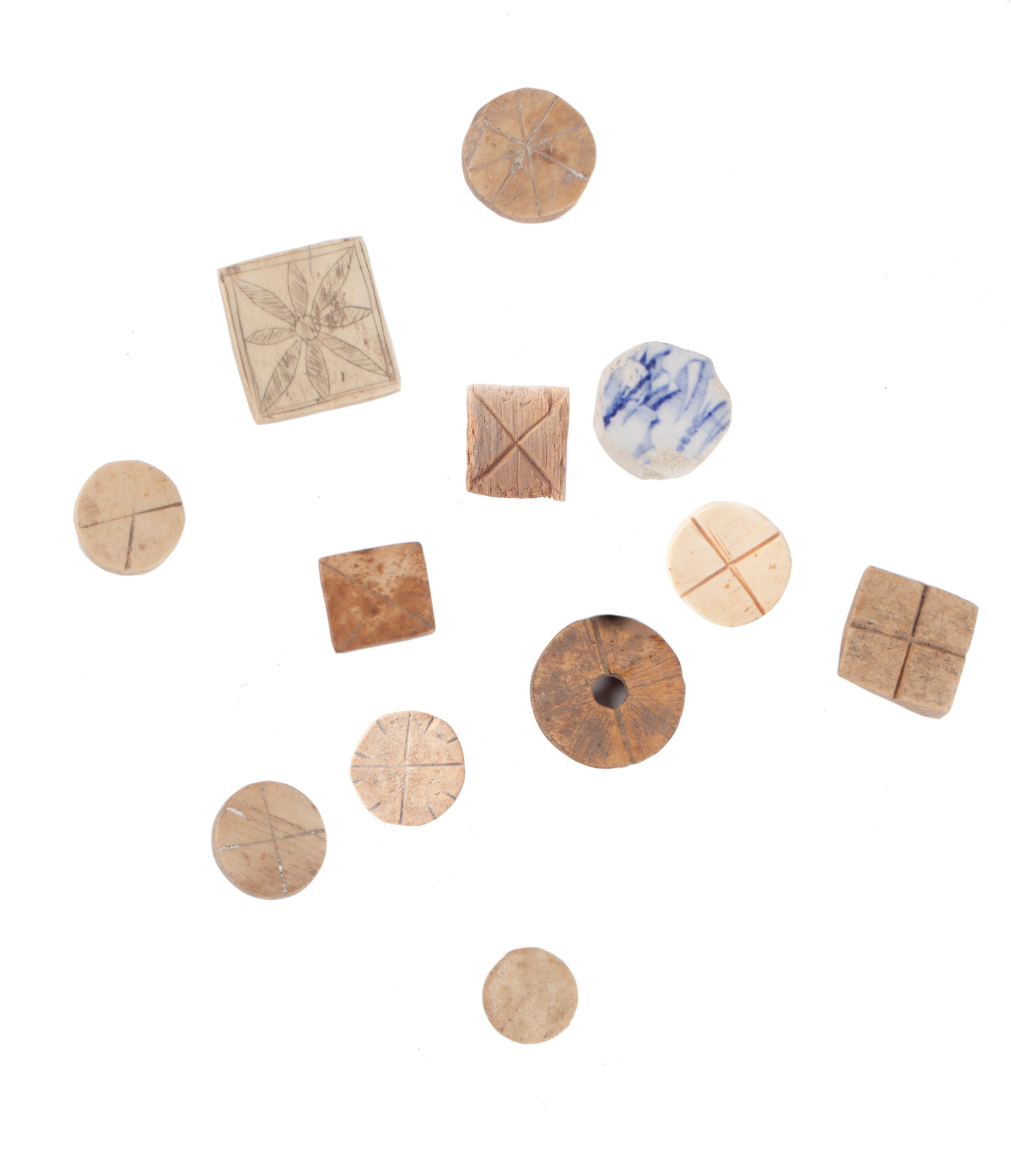
Convict Sydney
Convict gaming tokens
These bone, ceramic and wooden gaming tokens appear to have been hand-carved by convicts from rubbish scraps and animal bones saved from their meals
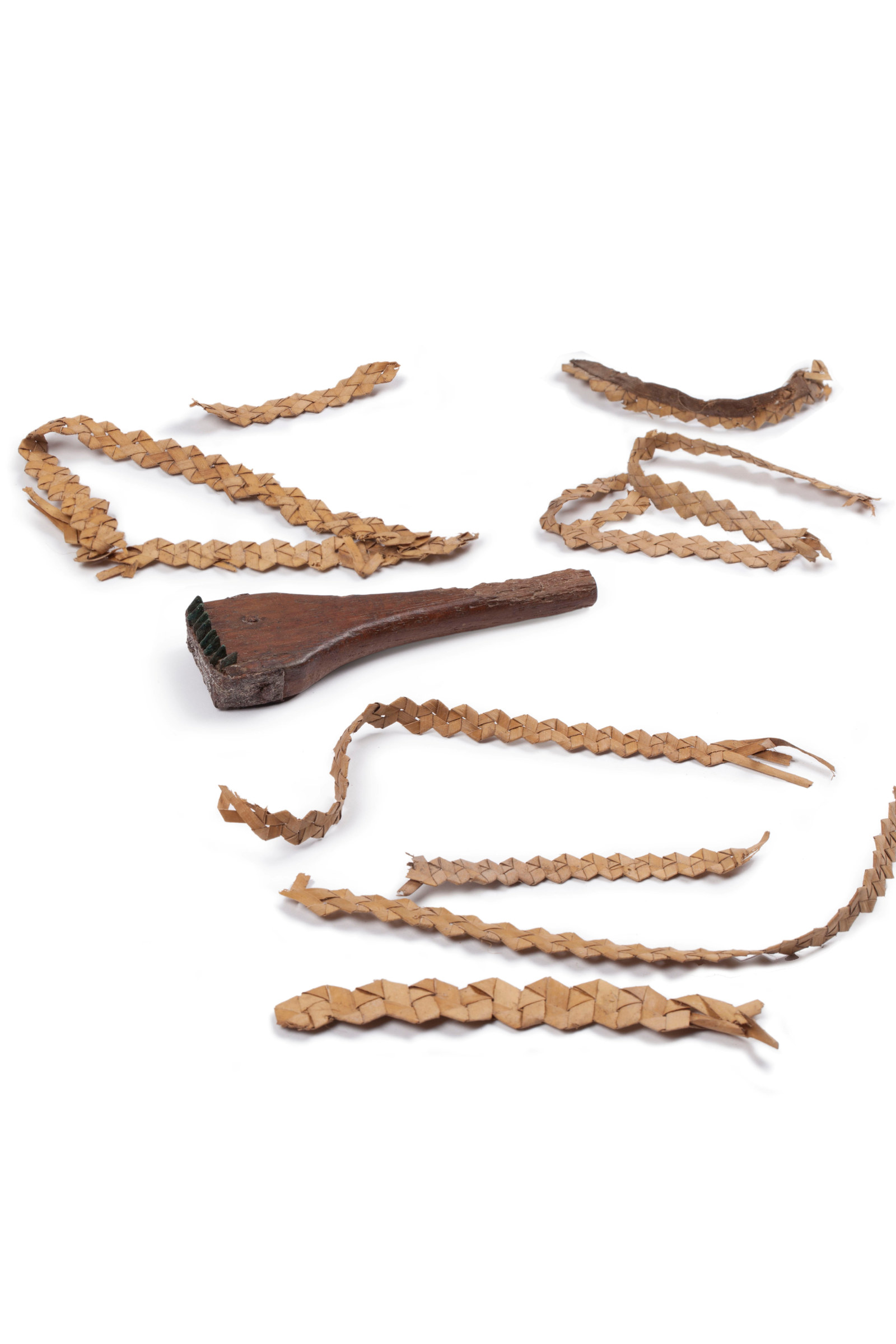
Convict Sydney
Convict hat sennets and leaf shredder
This shredding tool and ‘sennets’ or fragments of plaited cabbage tree palm leaves (Livistona australis) found beneath the floors of the Hyde Park Barracks were used by convicts for making hats
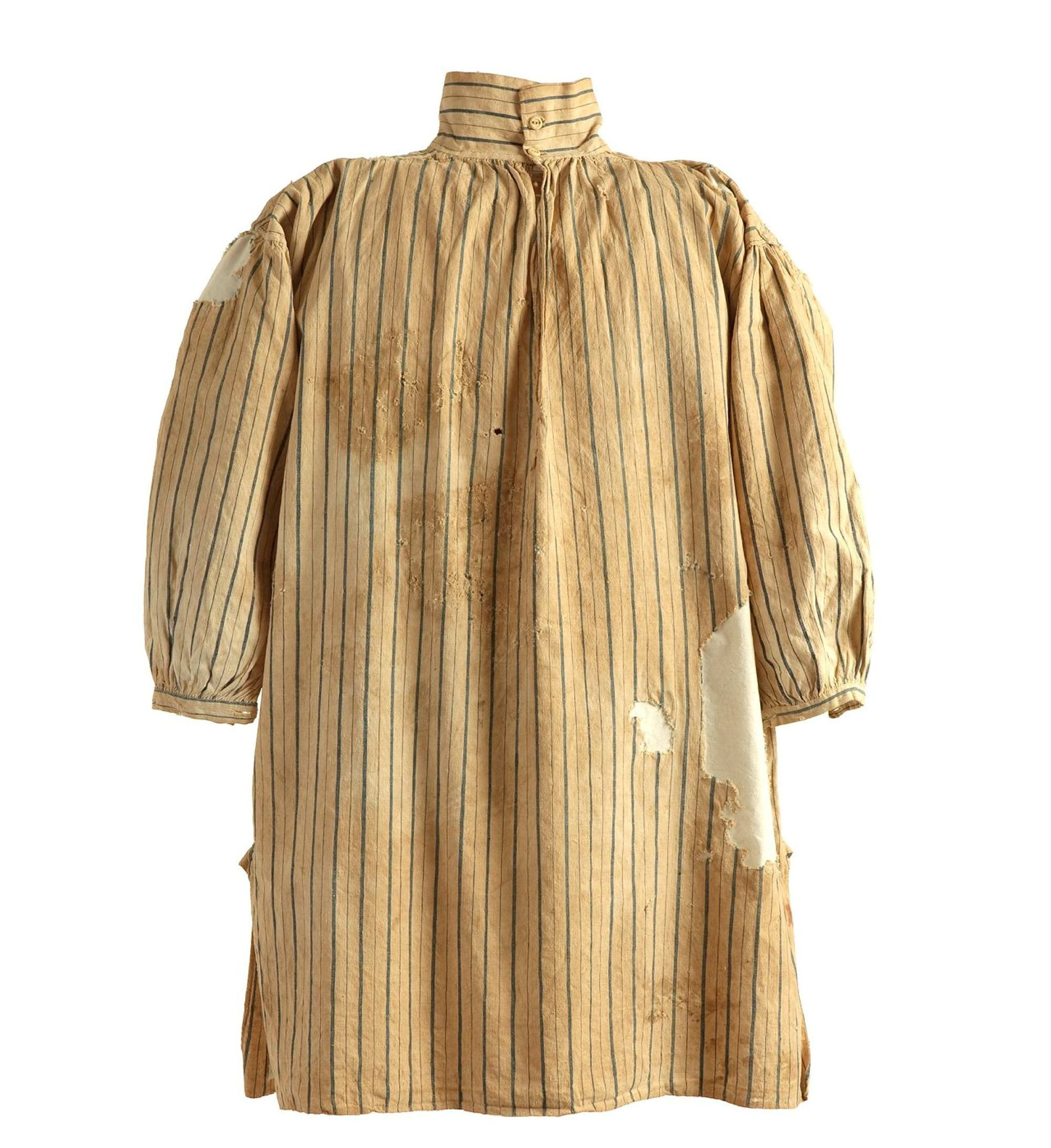
Convict Sydney
Convict shirt
Known as a smish, kemesa or flesh-bag in the convict ‘flash’ slang language, this convict uniform shirt has been worn, torn, stained and patched
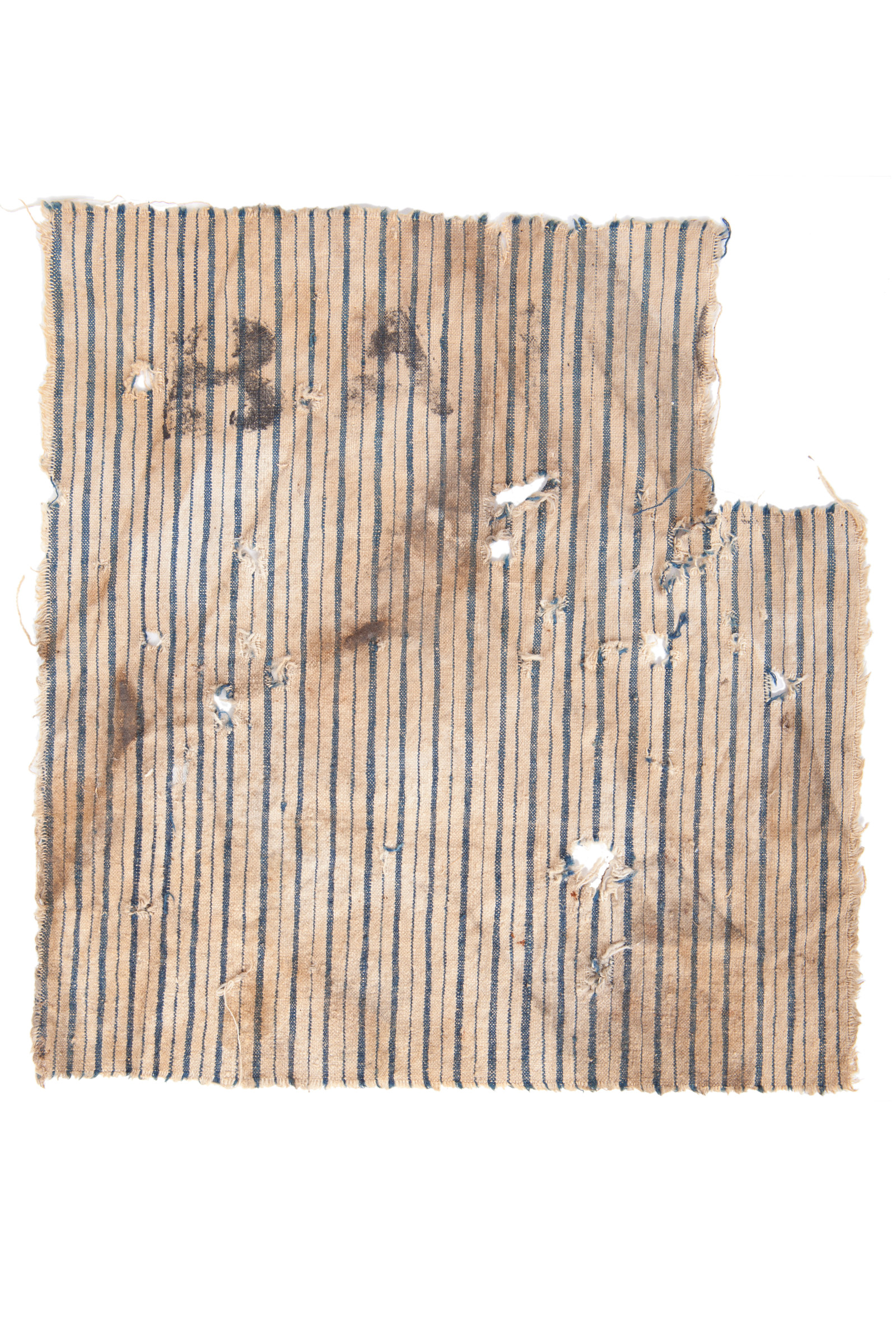
Convict Sydney
Convict shirt scrap, ‘B.A.’
This square scrap of striped convict shirt is curiously stamped with the letters ‘B’ and ‘A’
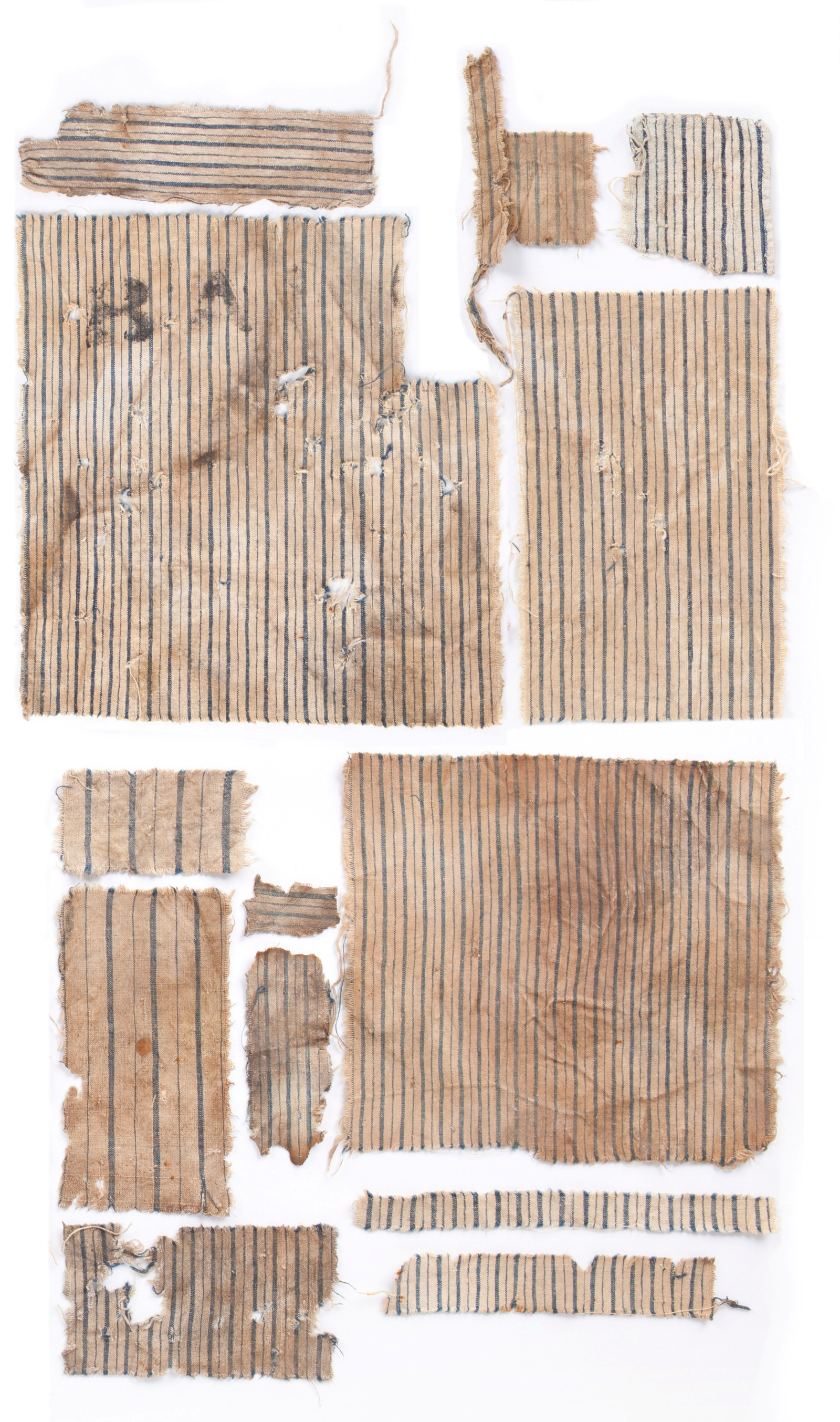
Convict Sydney
Convict shirt scraps
Deliberately torn into squares and strips, these scraps of convict shirt suggest that some convicts were recycling old clothing for new purposes
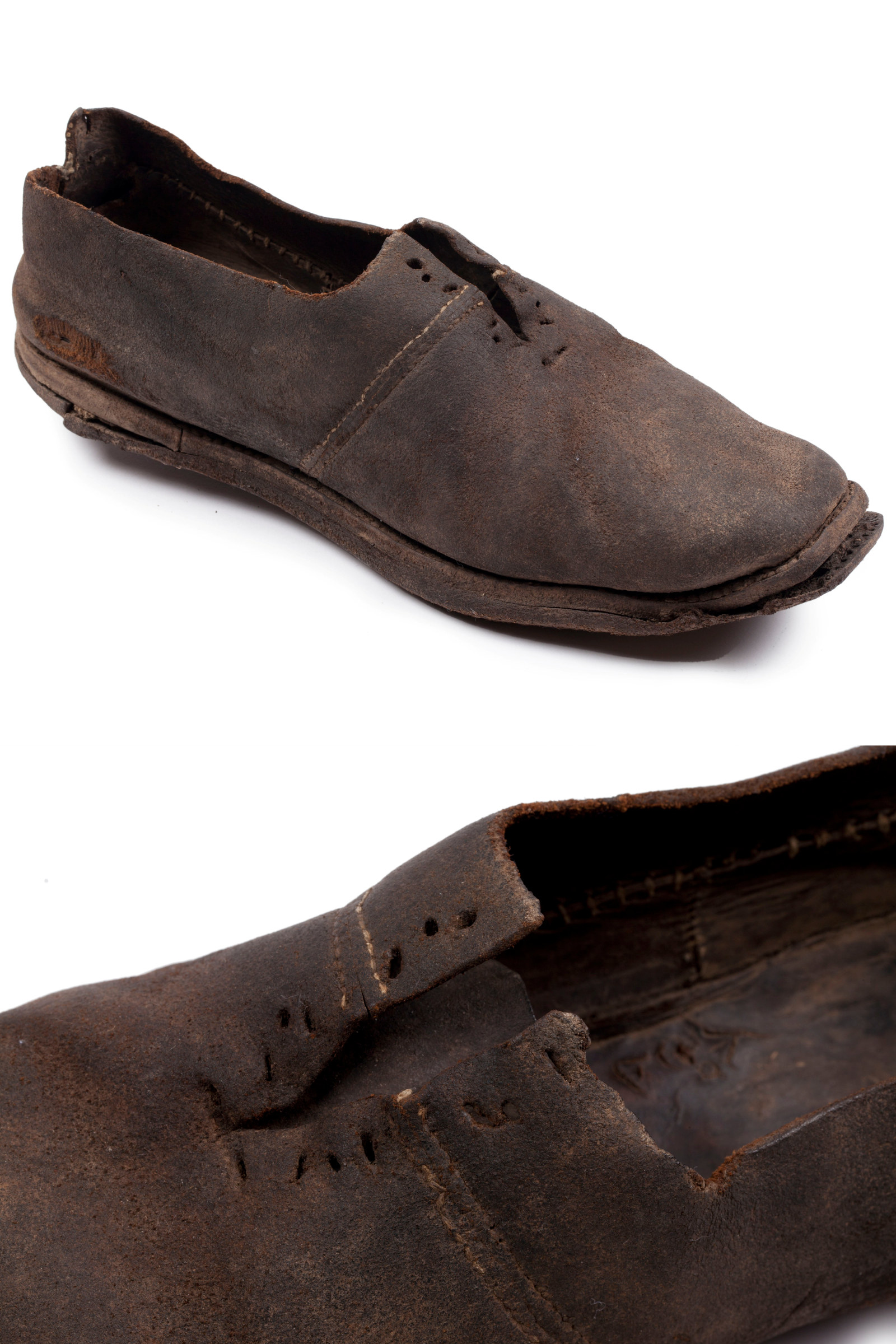
Convict Sydney
Convict shoe
Shoes were known as crab shells or hopper dockers in the convict ‘flash’ slang language; two or three pairs were issued to each convict annually
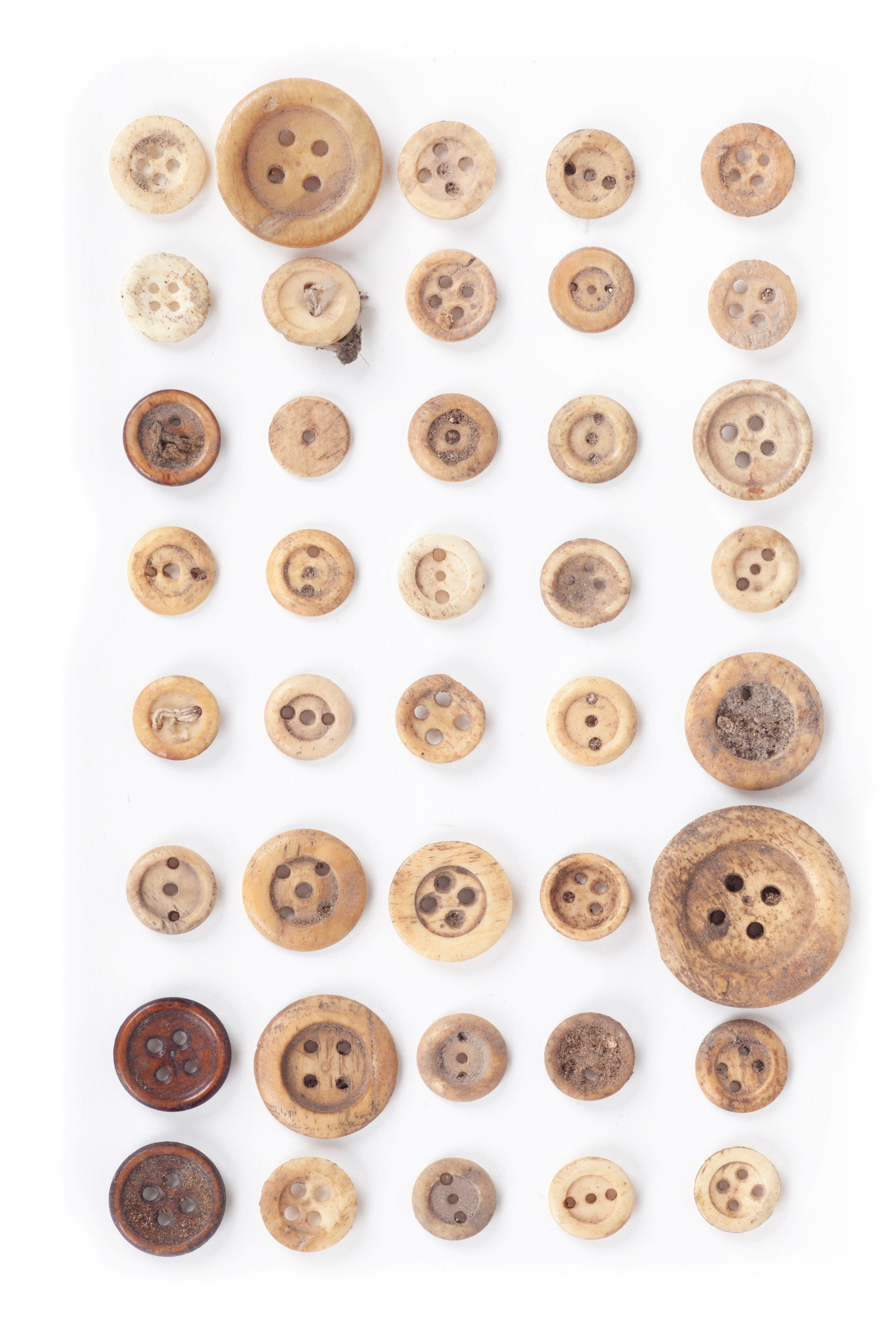
Convict Sydney
Convict uniform buttons
Archaeologists found more than 250 bone buttons, which were once attached to convict shirts, jackets and trousers and then lost beneath the floors at the Hyde Park Barracks
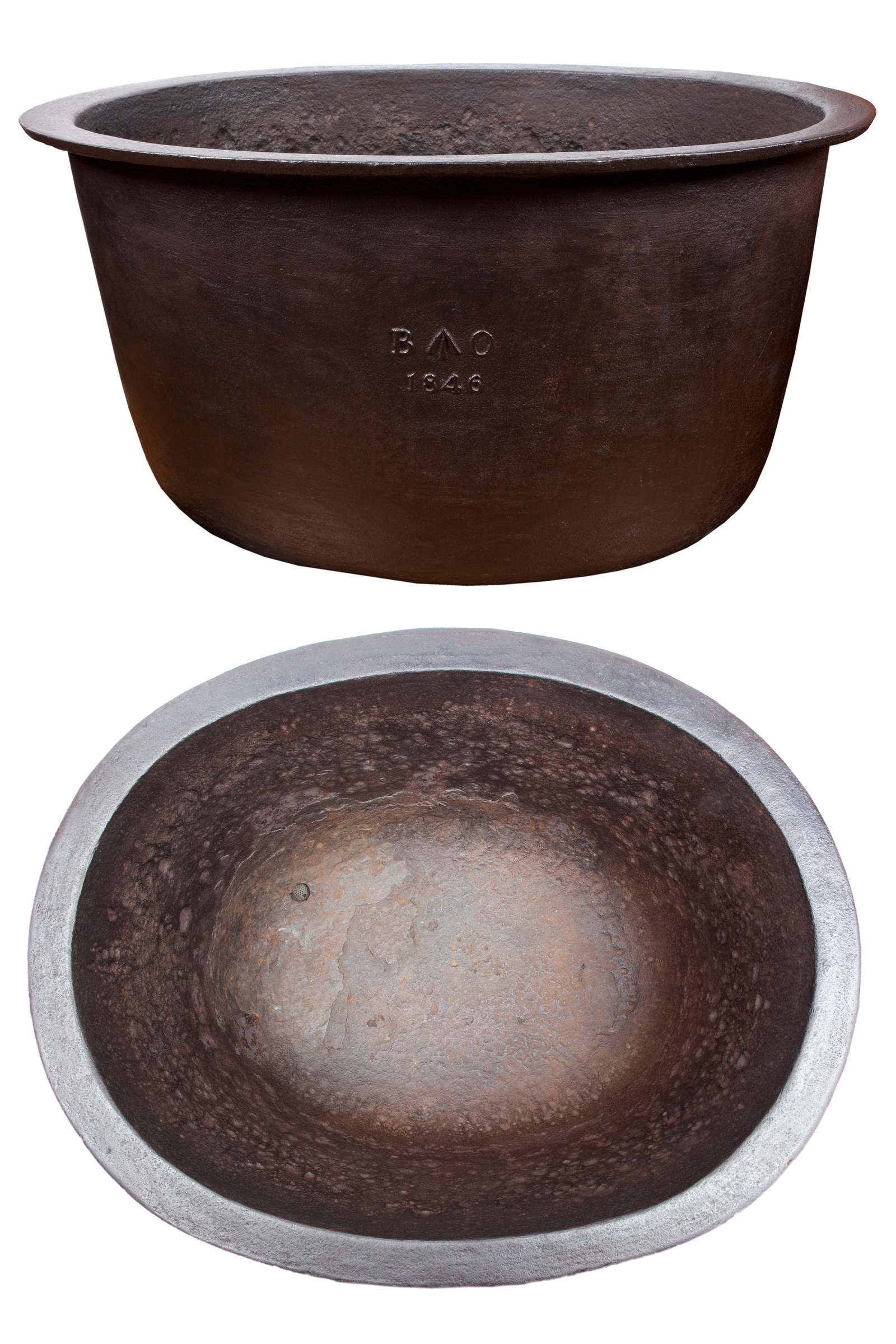
Convict Sydney
Cooking cauldron
The watery stew eaten by convicts at the Hyde Park Barracks was boiled in giant communal cast-iron pots
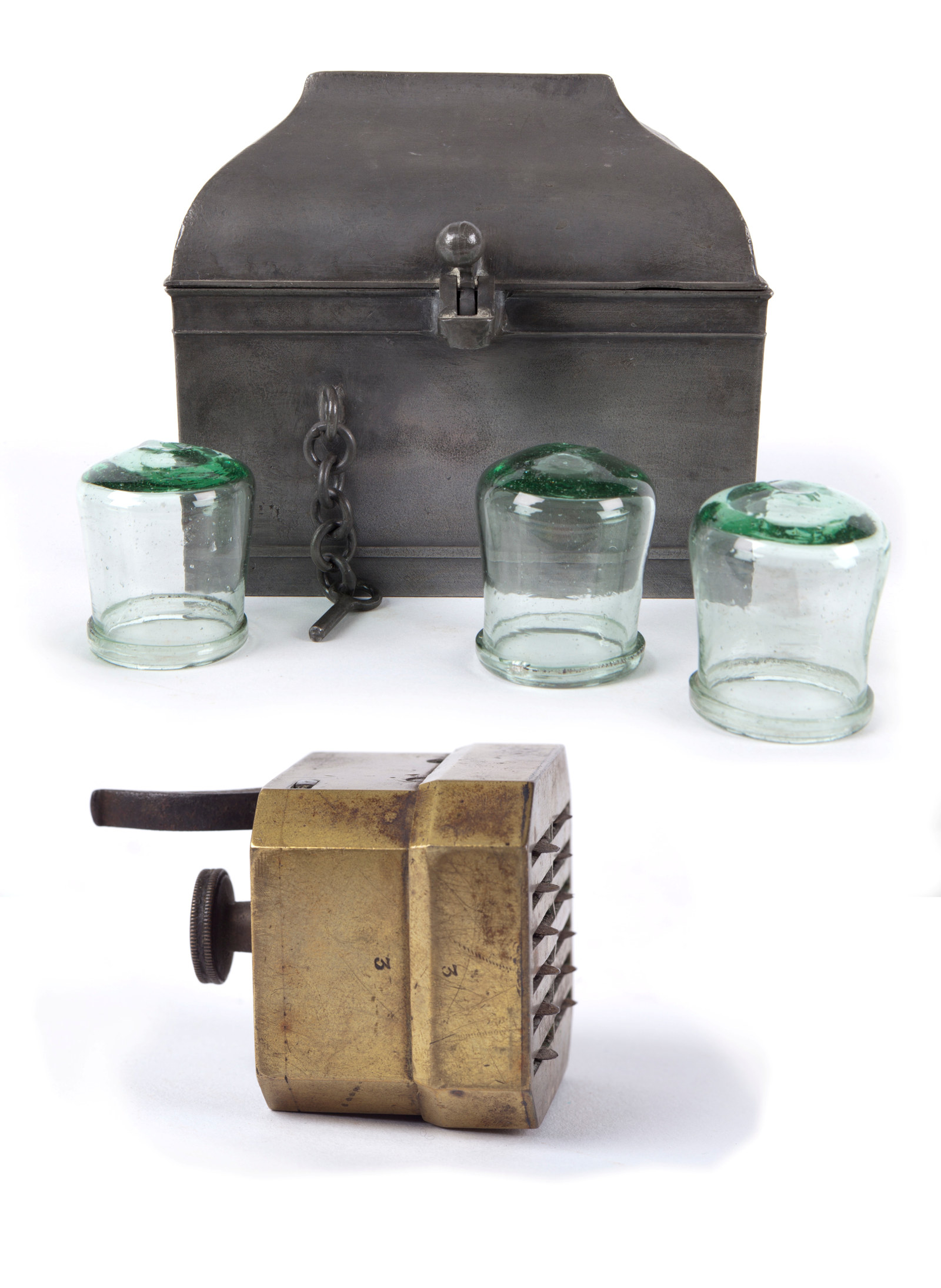
Convict Sydney
Cupping glasses and scarificator
These cupping glasses are of the type that was used in the treatment of convict patients at the General ‘Rum’ Hospital
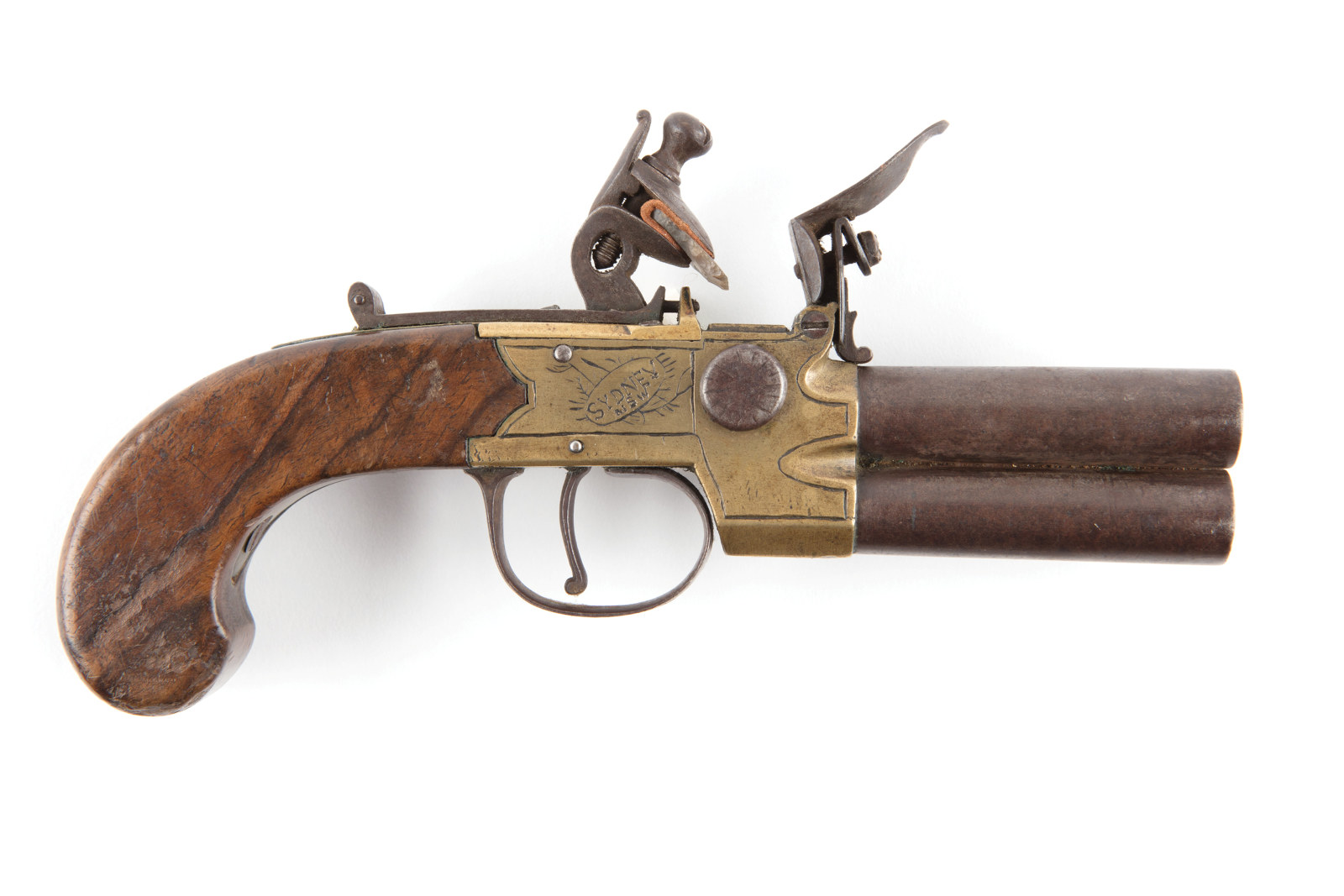
Convict Sydney
Danks pistol
This double-barrel pocket-sized flintlock pistol, made in Sydney between 1828 and 1836, is thought to be the earliest surviving firearm of colonial manufacture

Convict Sydney
Earthenware vessel
This lead-glazed earthenware vessel probably once contained medicines or ointments for treating convict patients
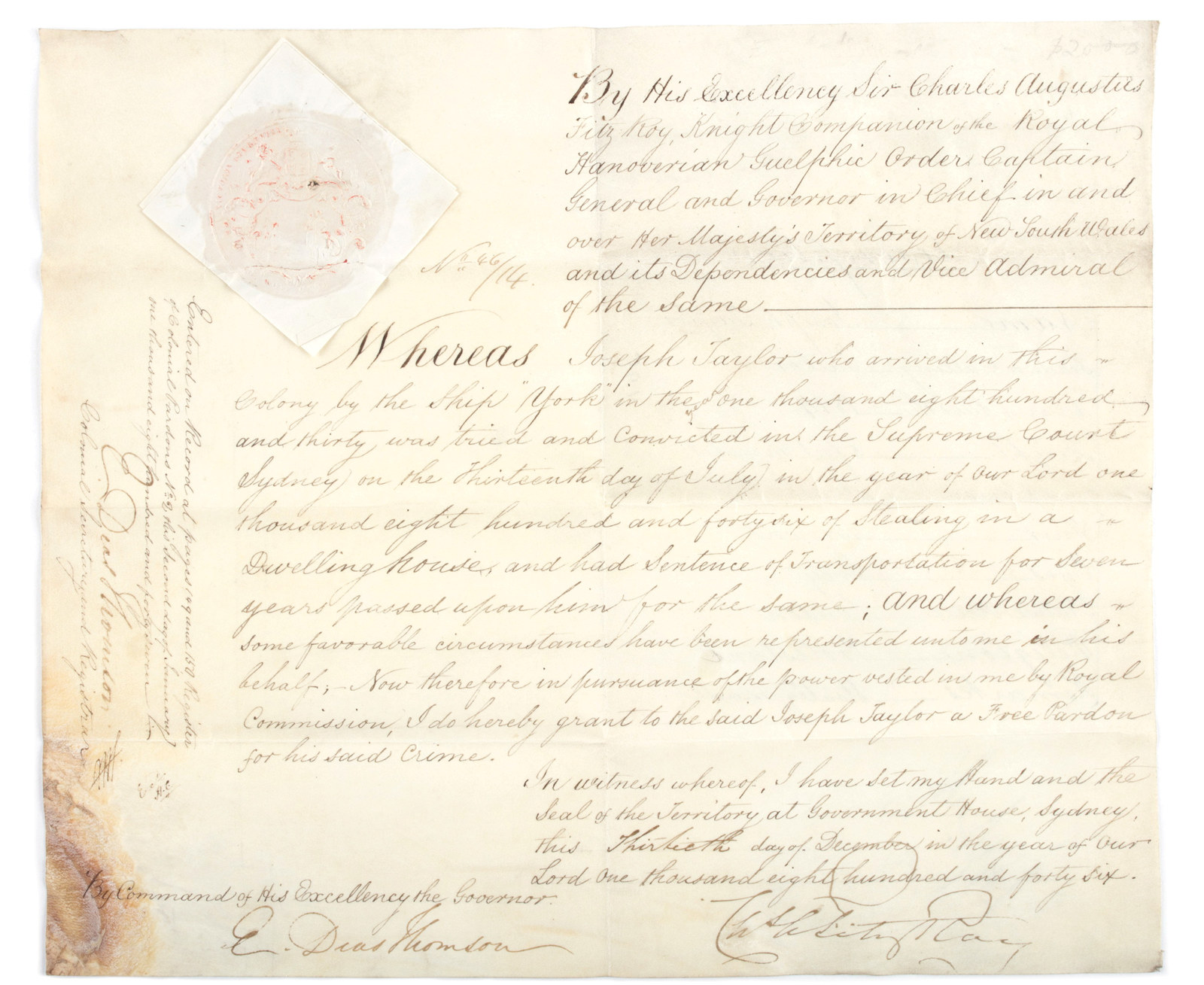
Convict Sydney
Free pardon
Drawn up at Government House, Sydney, on 30 December 1846, and signed and sealed by Governor Charles Fitzroy, this document granted a free pardon to convict Joseph Taylor
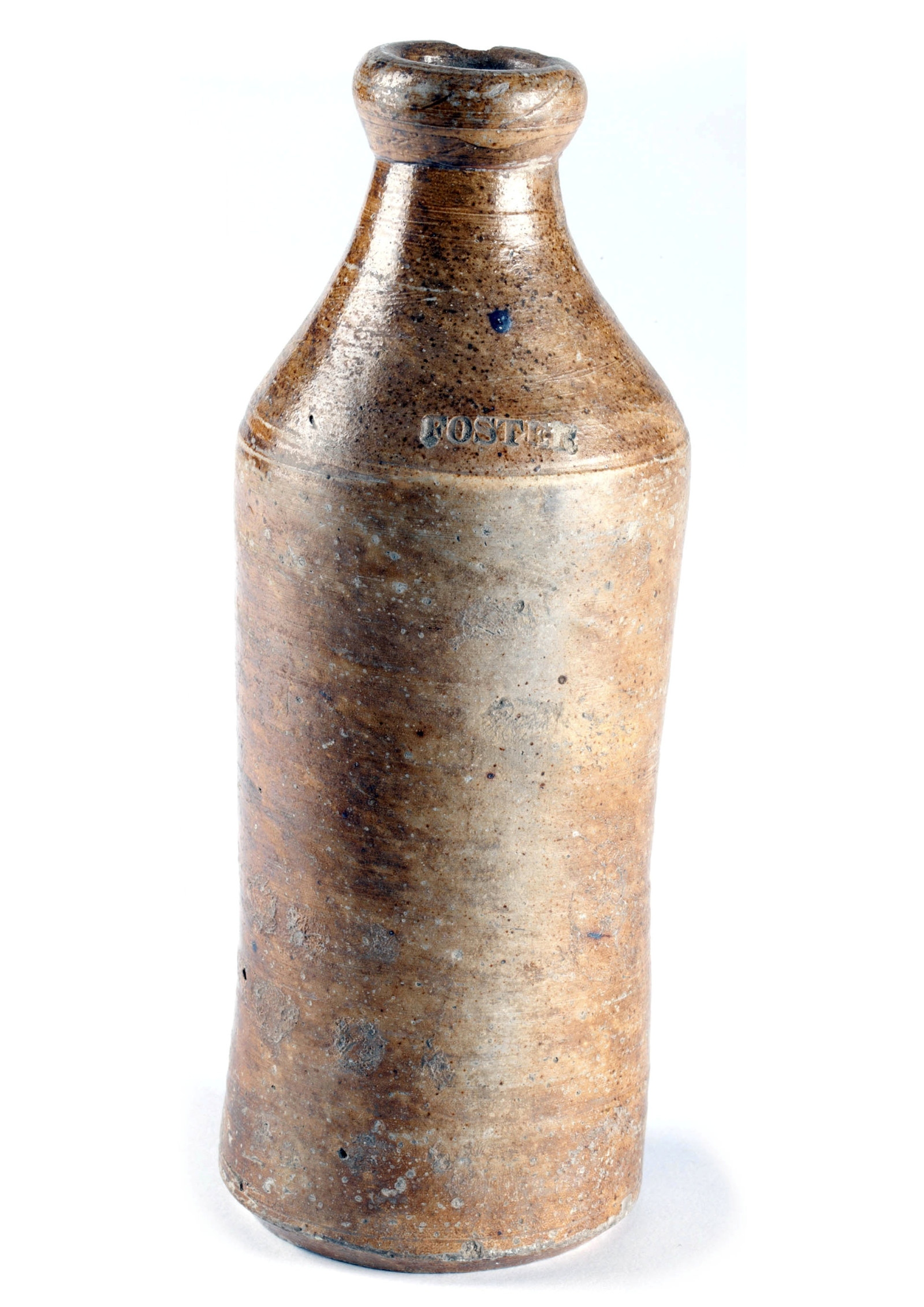
Convict Sydney
Ginger beer bottles
Two salt-glazed stoneware ginger beer bottles were recovered by archaeologists from beneath the floors of the Hyde Park Barracks, both dating from the 1830s and 40s when convicts occupied the wards
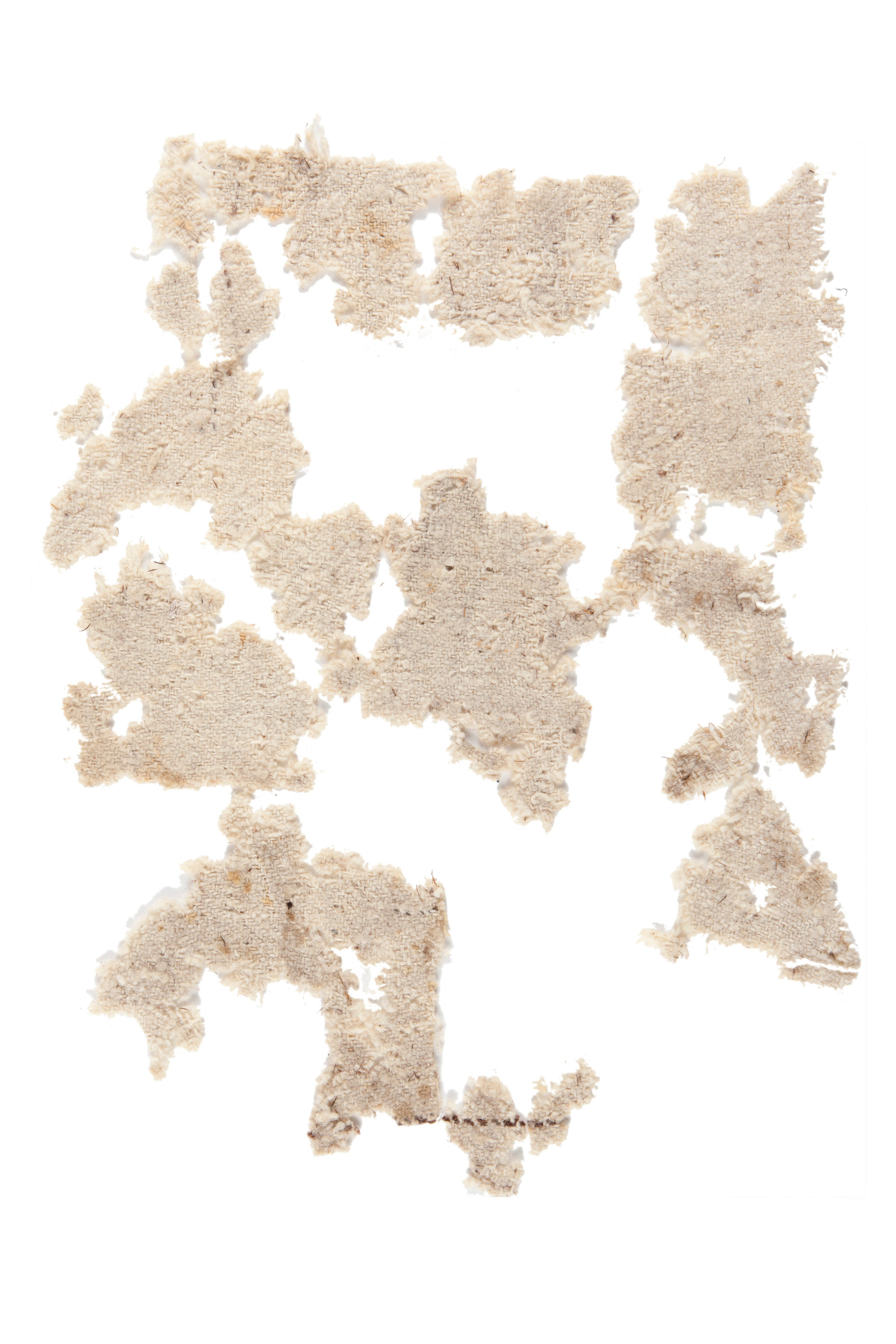
Convict Sydney
Government blanket fragments
These fragments of a natural-coloured woollen cloth are thought to be from a government issue blanket, used by convicts in the Barracks sleeping wards
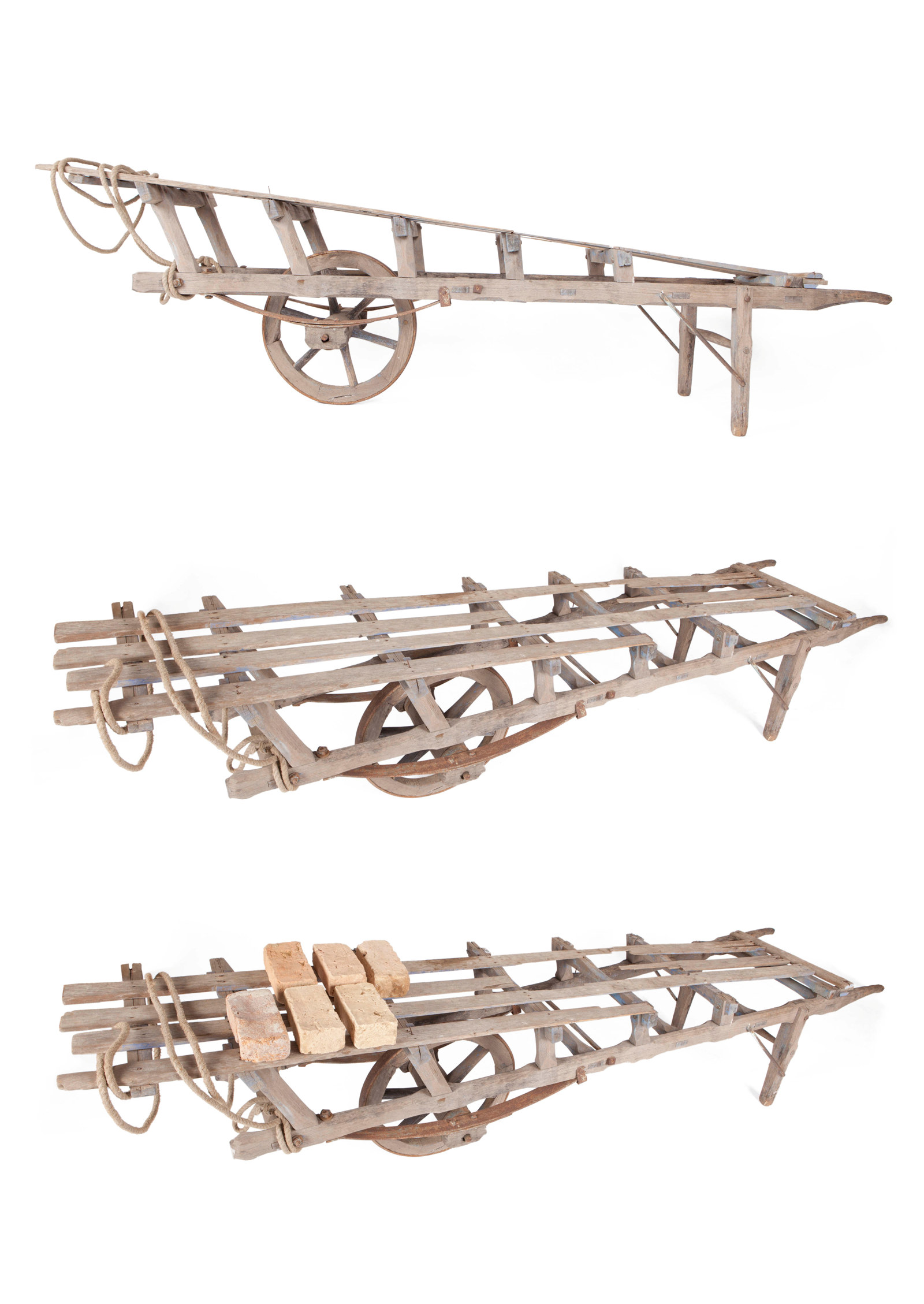
Convict Sydney
Hack barrow
Convict brickmakers working at the Brickfields (now Haymarket) used hack barrows like this one, stacking 20 or 30 wet bricks on the timber palings along the top, for transporting them from the moulding table to the ‘hack’ yard for drying
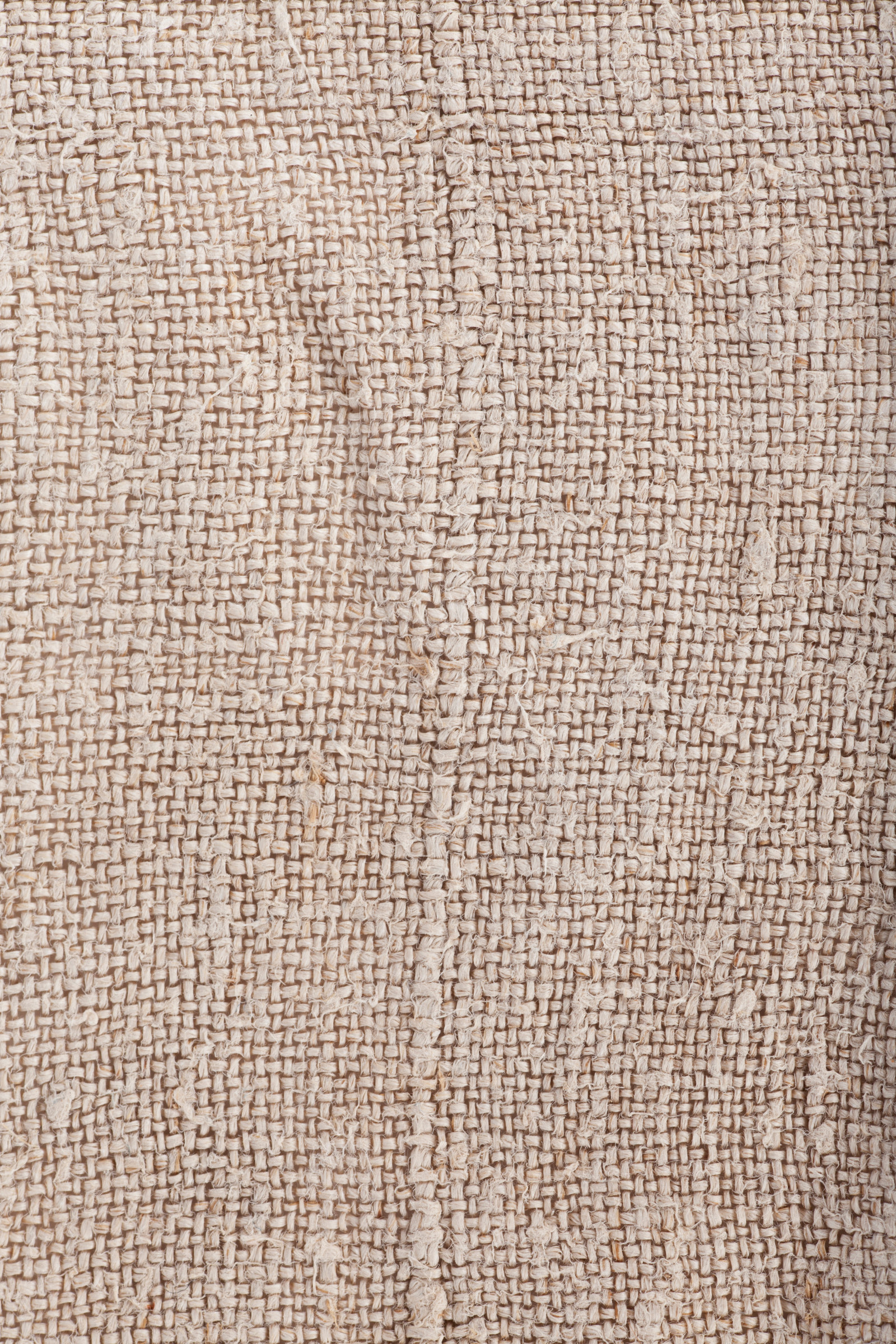
Convict Sydney
Hammock Scrap
A few scraps of rope and coarse, but finely woven flax linen scraps like this one are all that’s left of the hundreds of hammocks that originally lined the convict sleeping wards

Convict Sydney
Iron Gang chain
Convicts who re-offended after arriving in the colony could be assigned to do hard labour in an iron gang
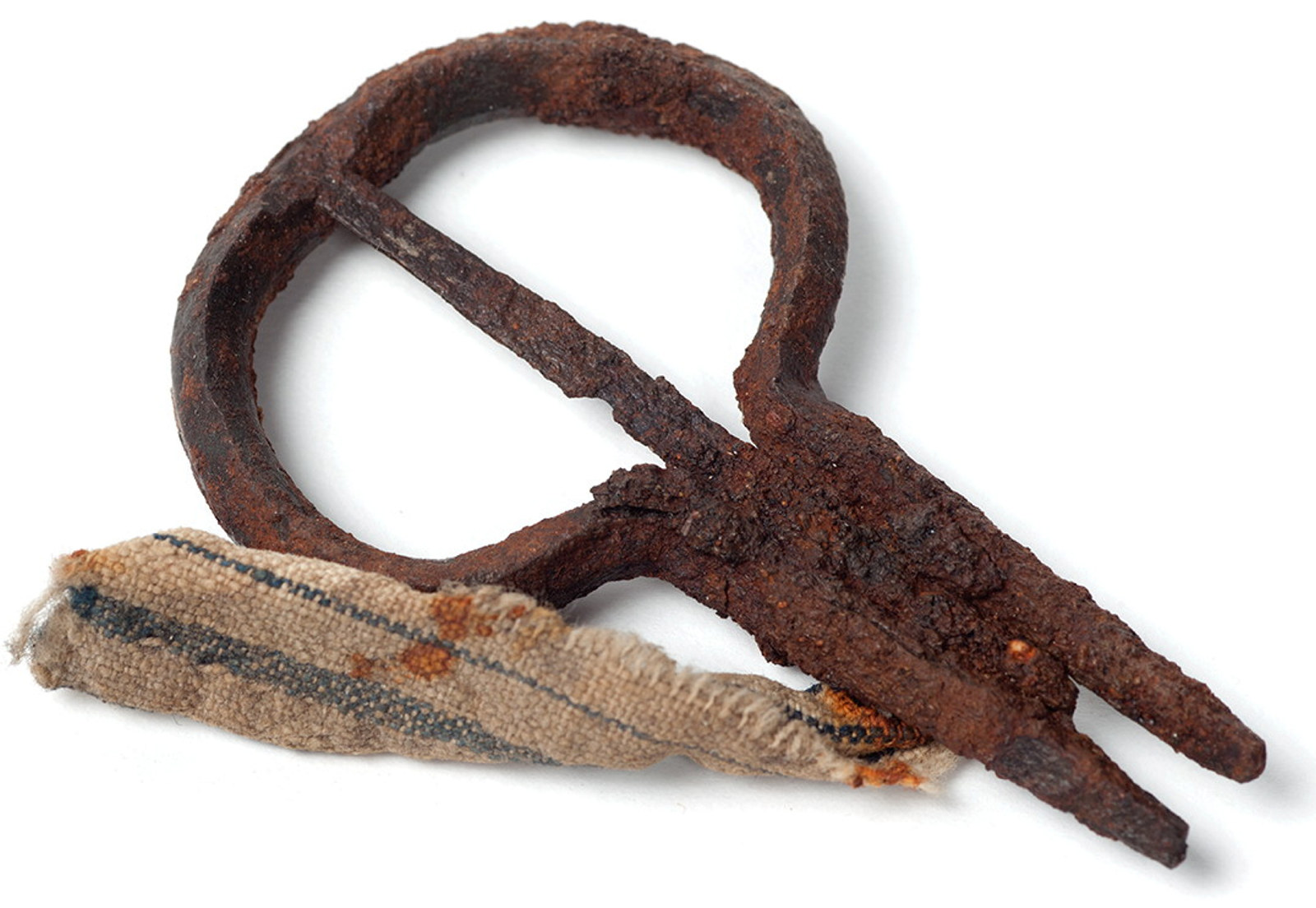
Convict Sydney
Jaw harp
This iron jaw harp was found by archaeologists at Hyde Park Barracks alongside other convict-era objects
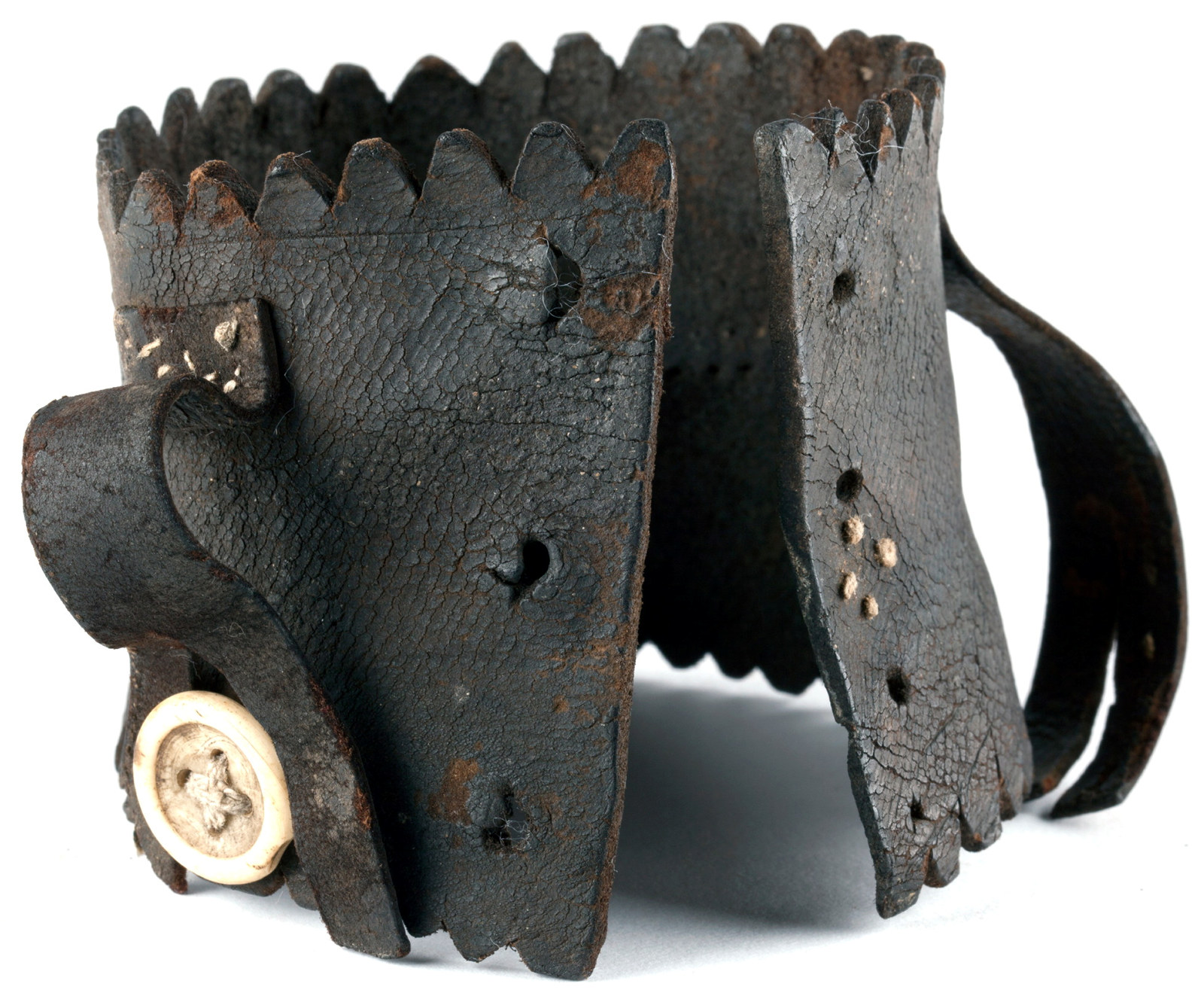
Convict Sydney
Leg iron guard
A stunning example of an improvised handicraft, this leather ankle guard or ‘gaiter’ was made to protect a convict’s ankle from leg irons
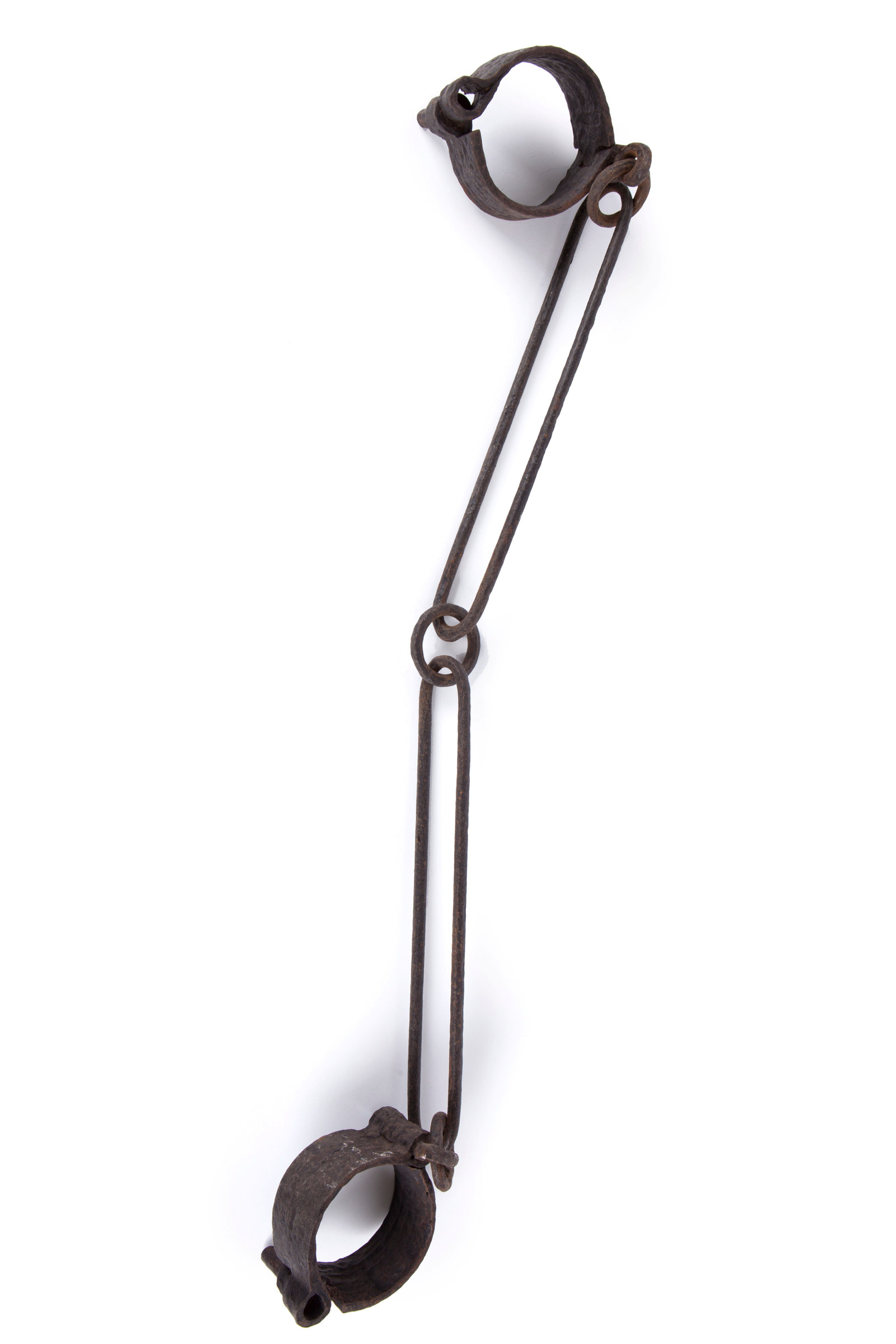
Convict Sydney
Leg Irons, bar link
Known as darbies or slangs in the convict ‘flash’ slang language, leg irons came in various shapes and sizes
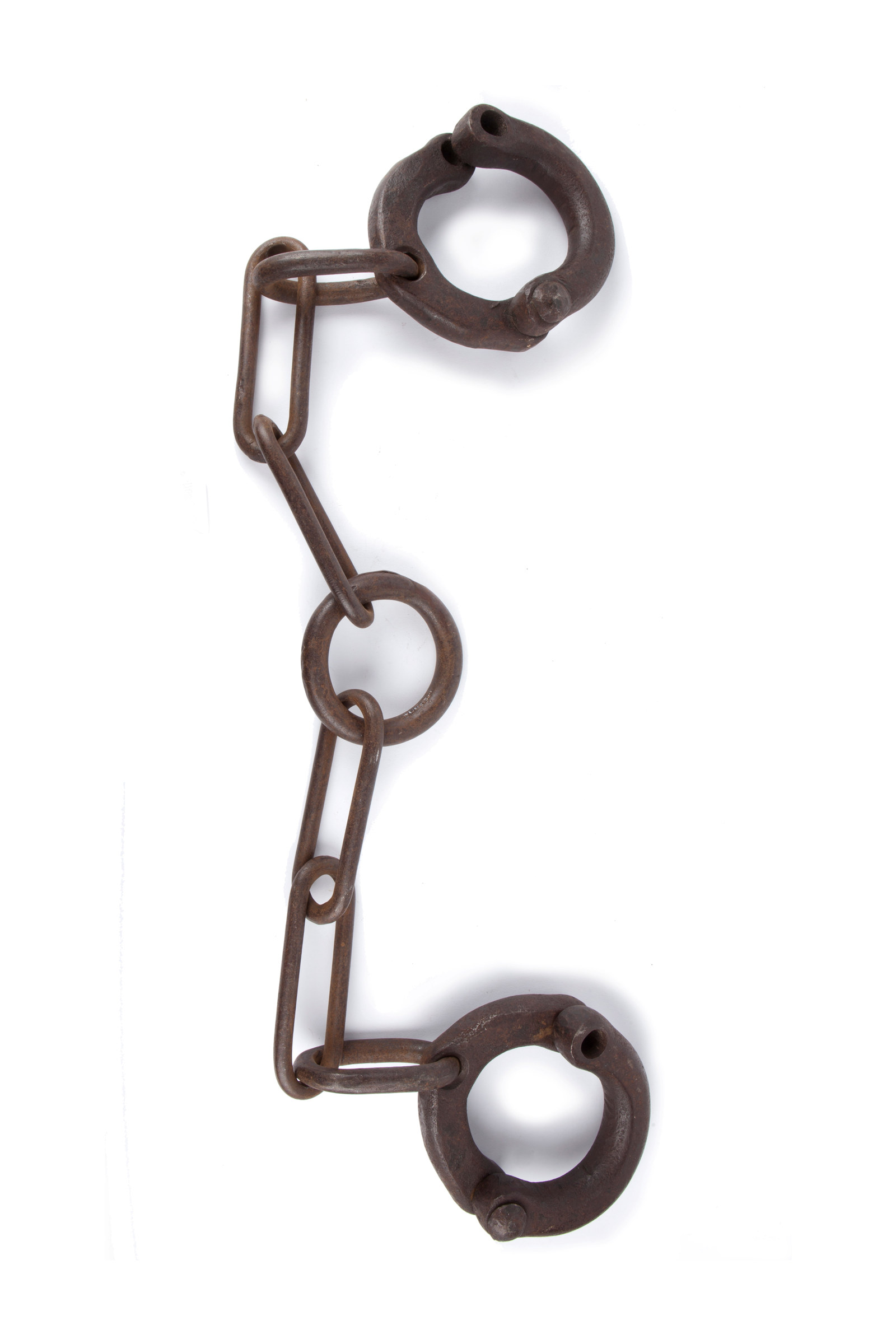
Convict Sydney
Leg irons, heavy
Known as darbies or slangs in the convict ‘flash’ slang language, leg irons came in various shapes and sizes
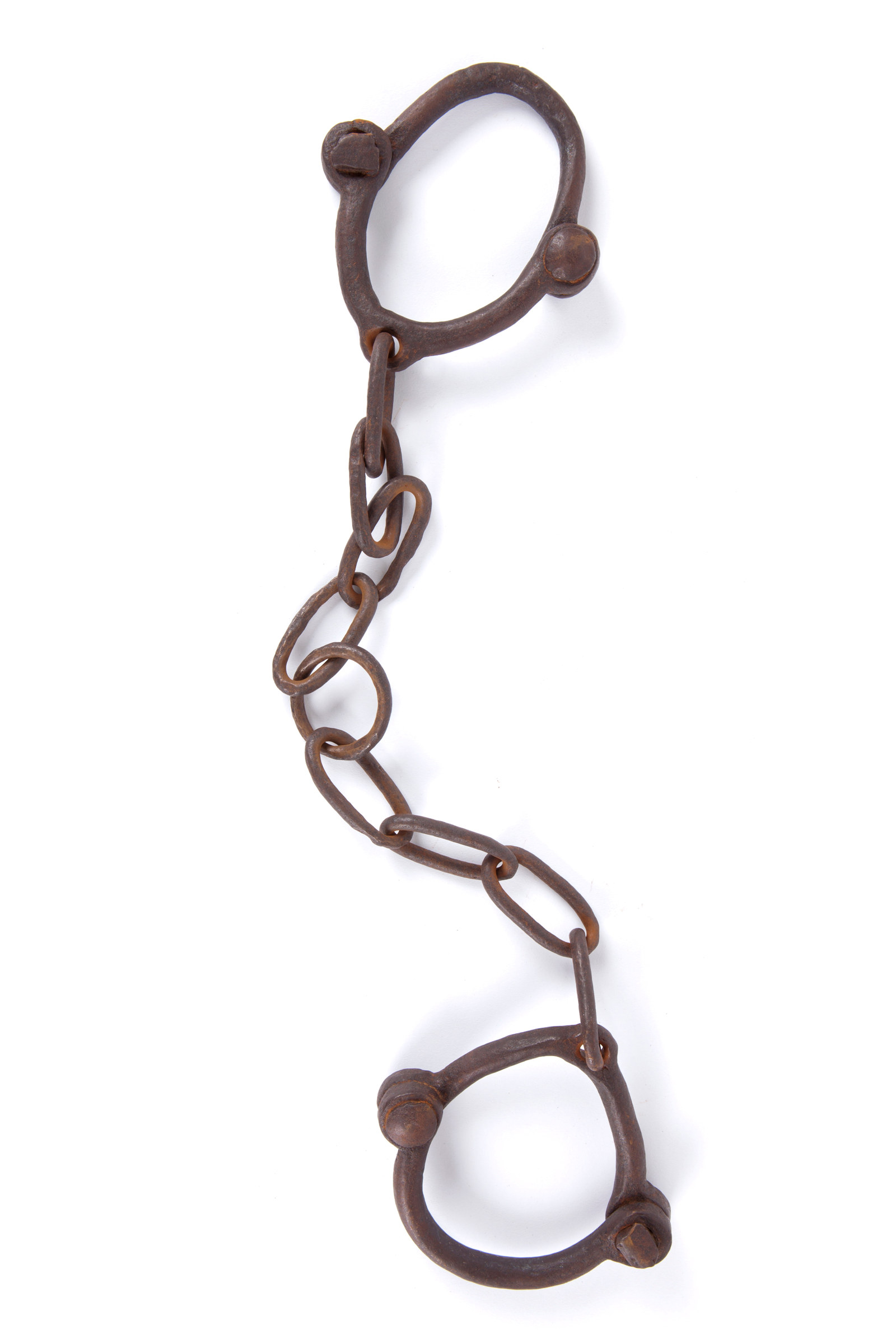
Convict Sydney
Leg irons, ovalled
Leg irons chafed the ankles, made loud clinking noises with every movement, and made working difficult and tiring
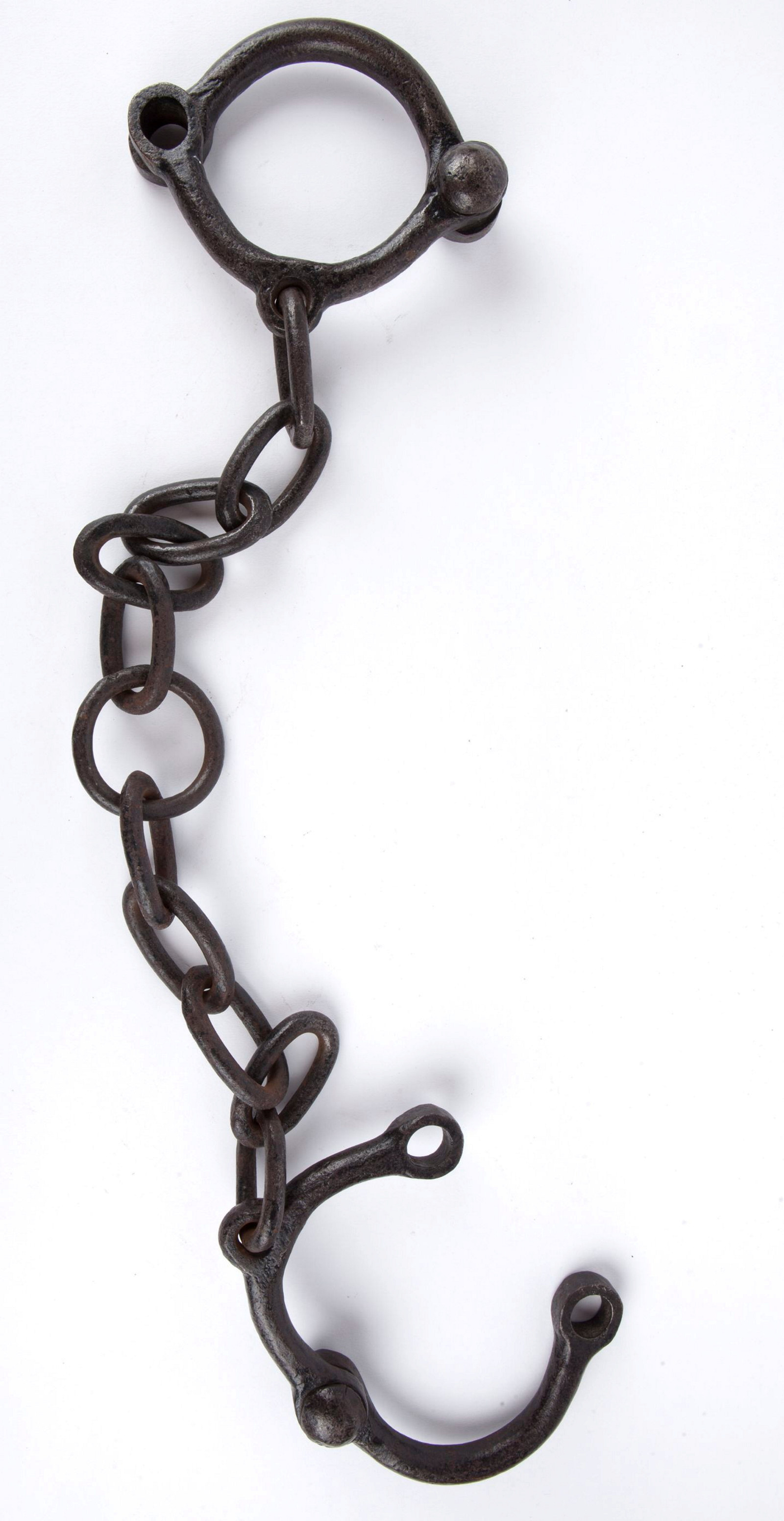
Convict Sydney
Leg irons, standard
Standard leg irons, like those pictured here, weighed seven pounds (3.2 kilograms)
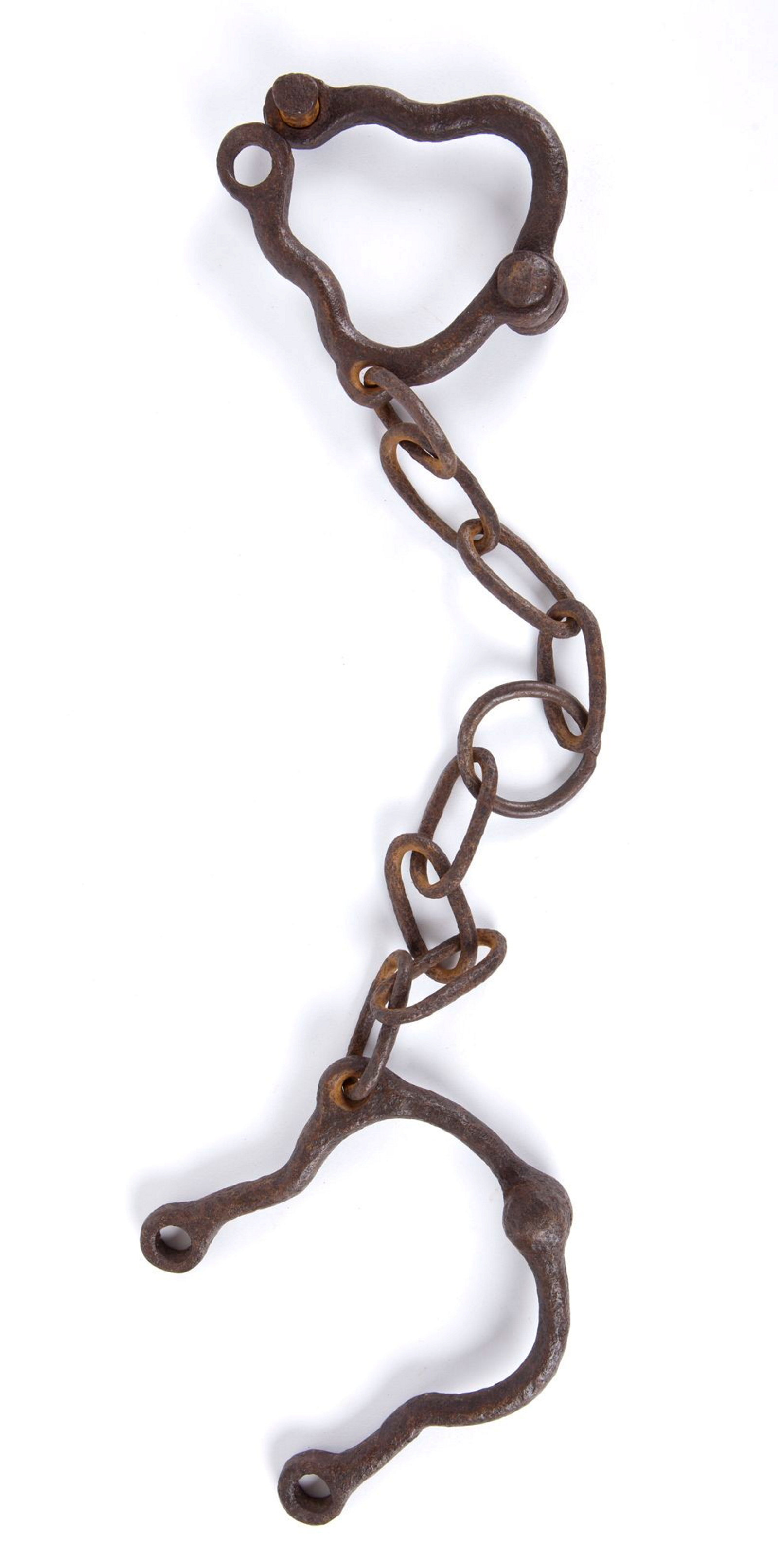
Convict Sydney
Leg irons, top
Top leg irons, like those pictured here, were designed to provide additional punishment
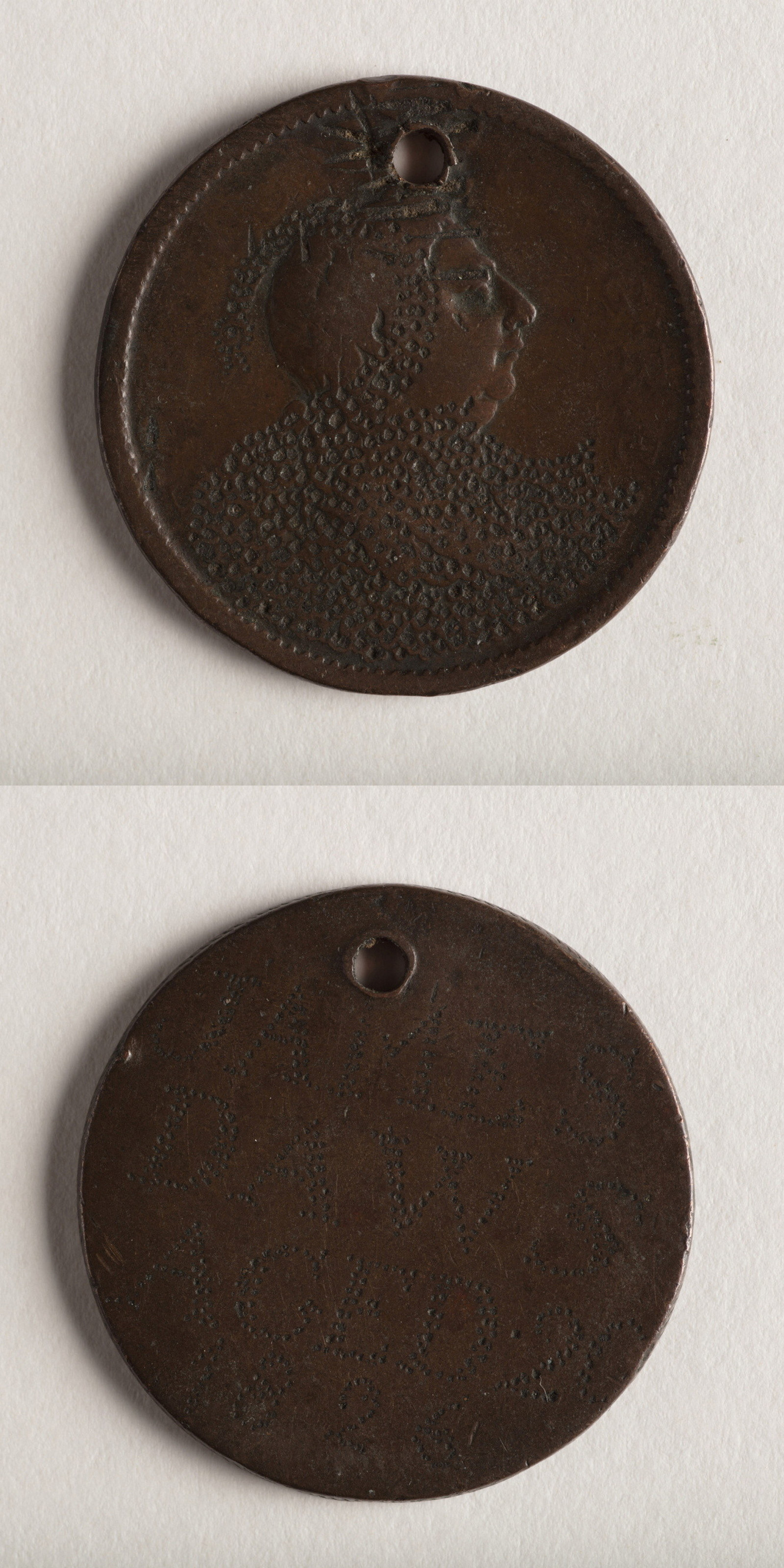
Convict Sydney
Love token, Daws
James Daws was convicted of stealing pennies (coins) in late 1825 or early 1826
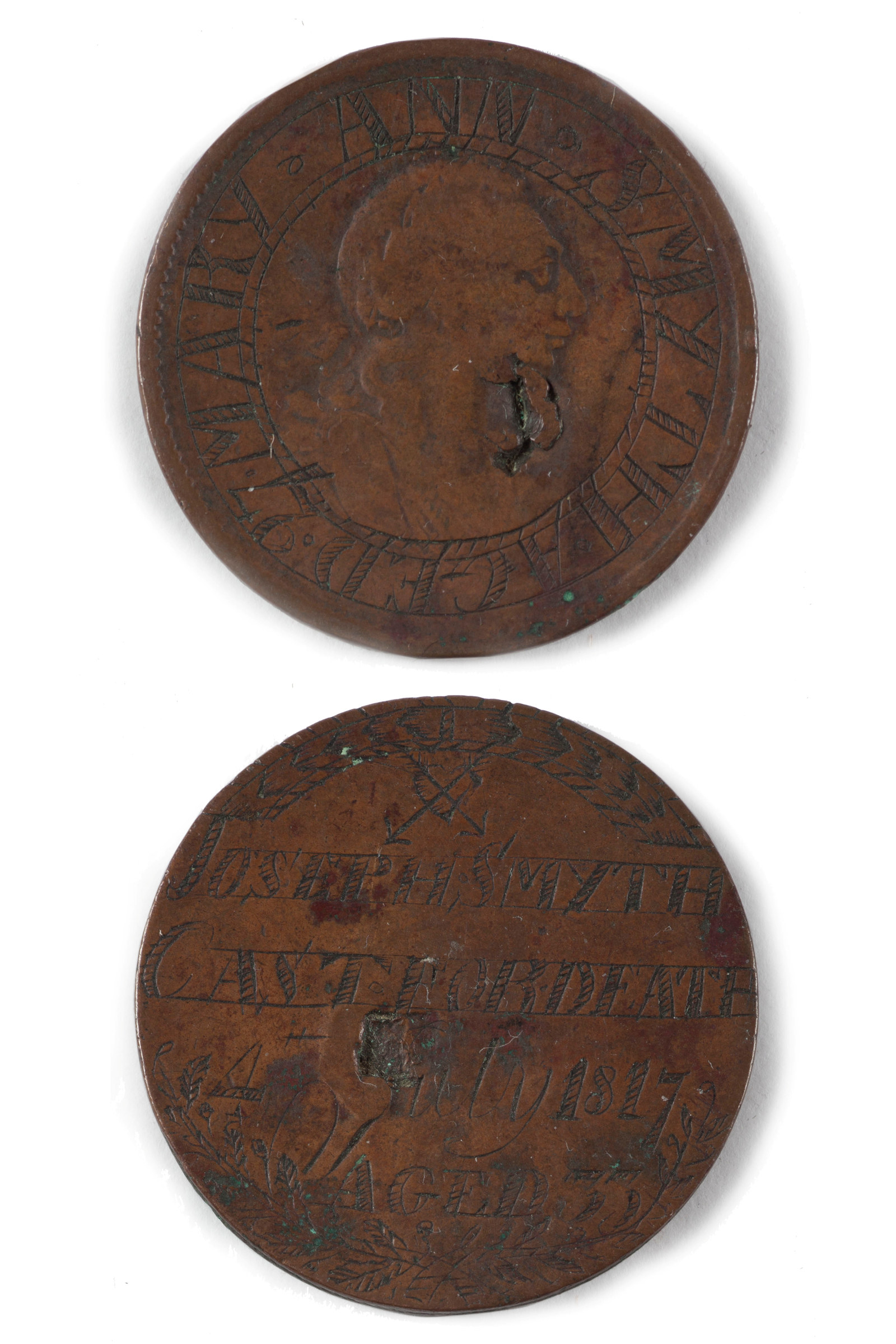
Convict Sydney
Love token, Smith
Joseph Smith arrived in New South Wales in April 1818, while Hyde Park Barracks was under construction
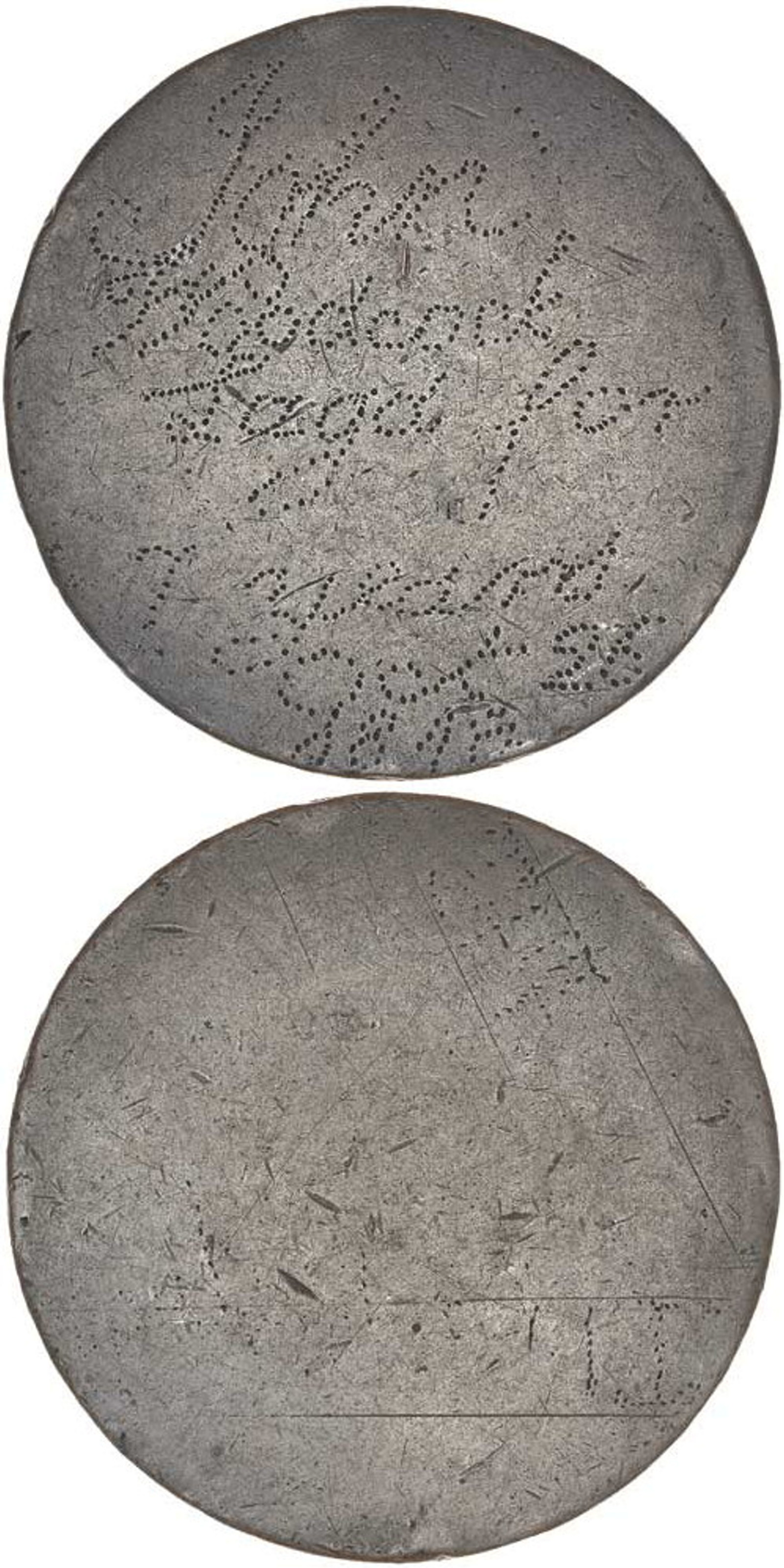
Convict Sydney
Love token, Woodcock
The simple lettering on this love token with his name on it suggests that John Woodcock may have engraved it himself, while he awaited his transportation
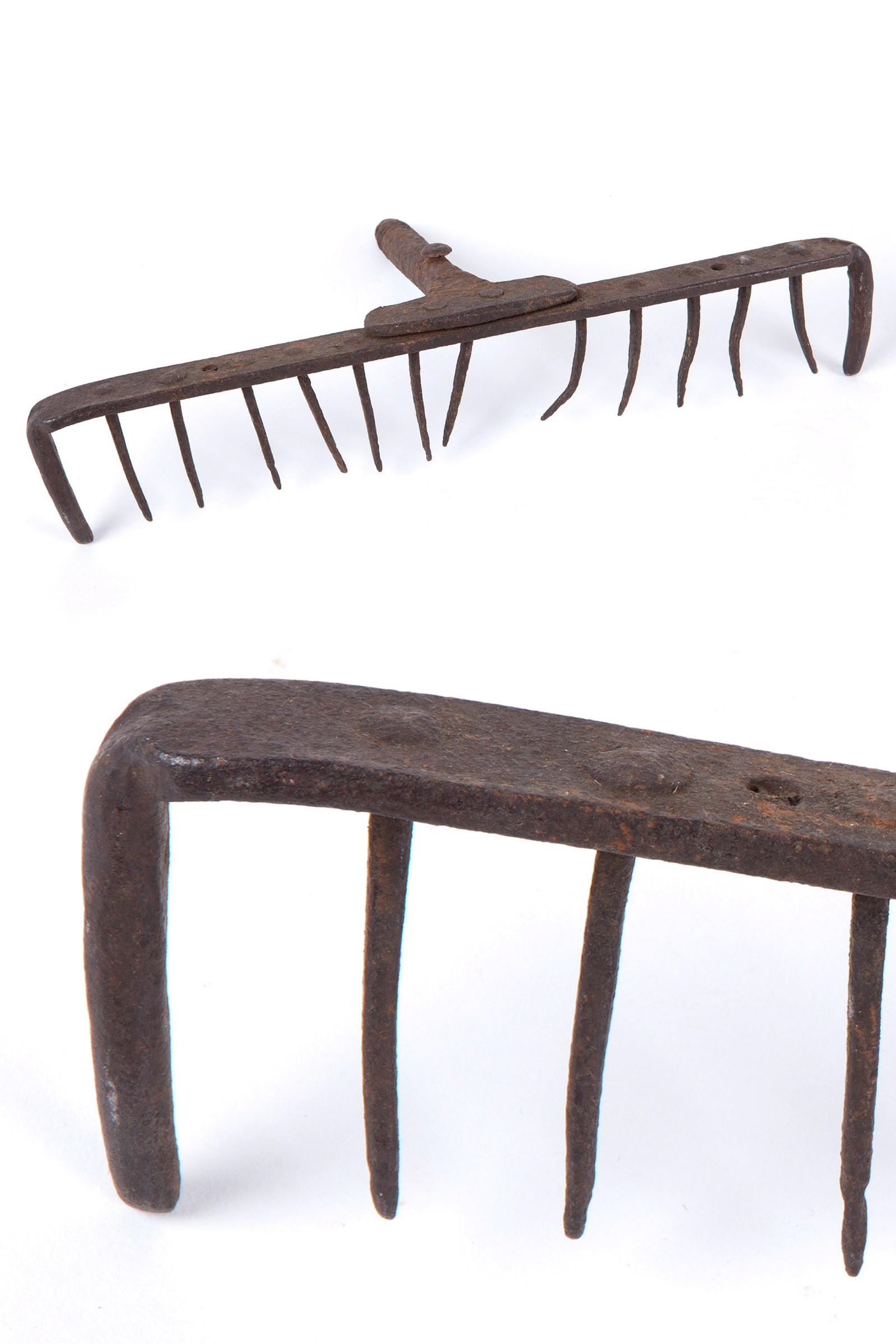
Convict Sydney
Rake head
Convicts working in the garden just south of Hyde Park Barracks would have used tools like this hand-forged iron rake for clearing and preparing the soil for planting

Convict Sydney
Rum Hospital glassware
These medicine bottles, irrigation syringe and measuring glass fragments were used for the treatment of convict patients
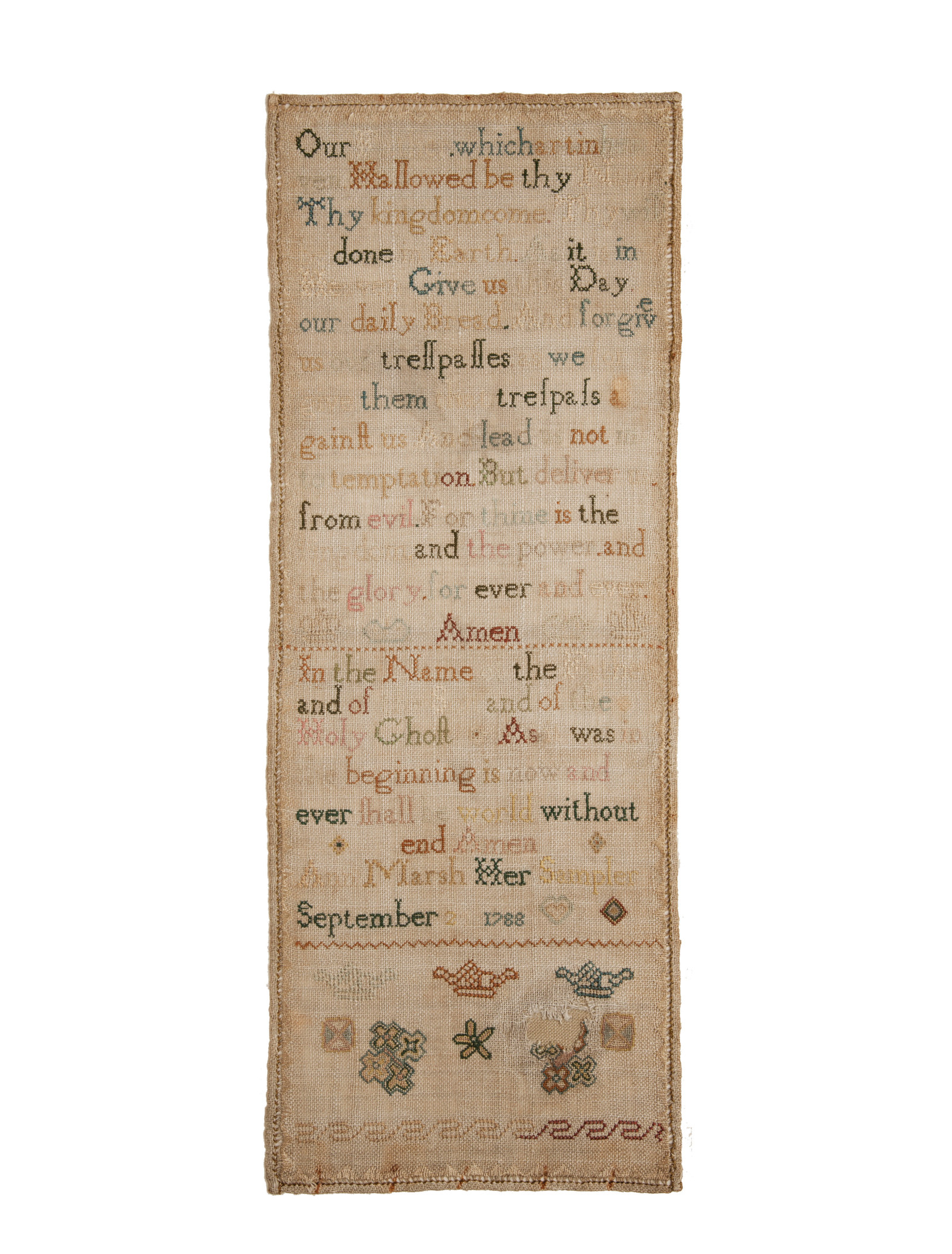
Convict Sydney
Sampler
In September 1788 a young woman named Ann Mash (or Ann Marsh) from Devon, England, embroidered the Lord’s Prayer to create this sampler
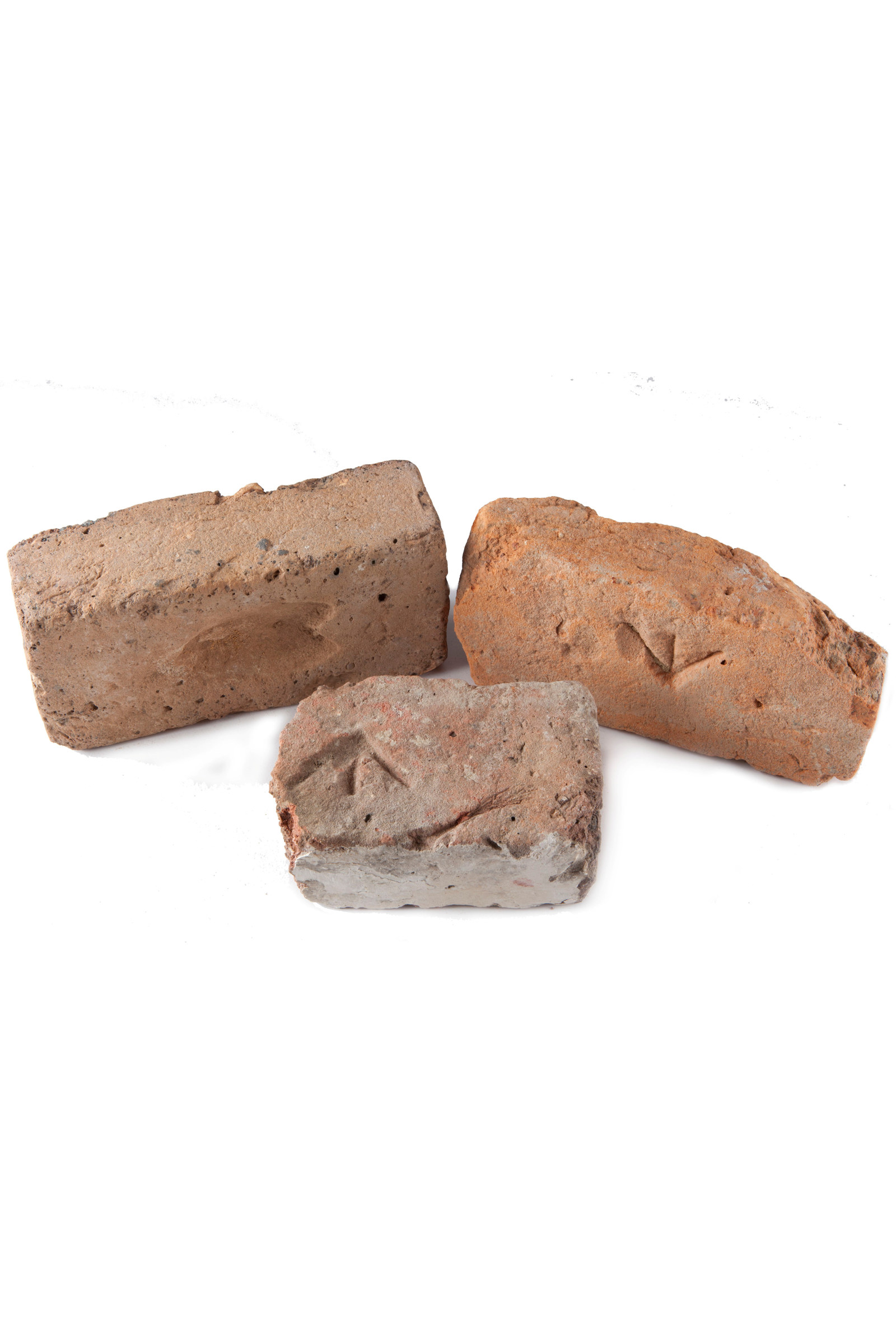
Convict Sydney
Sandstock bricks
Sandstock bricks such as these were the building blocks of Governor Macquarie’s ambitious public works scheme for Sydney
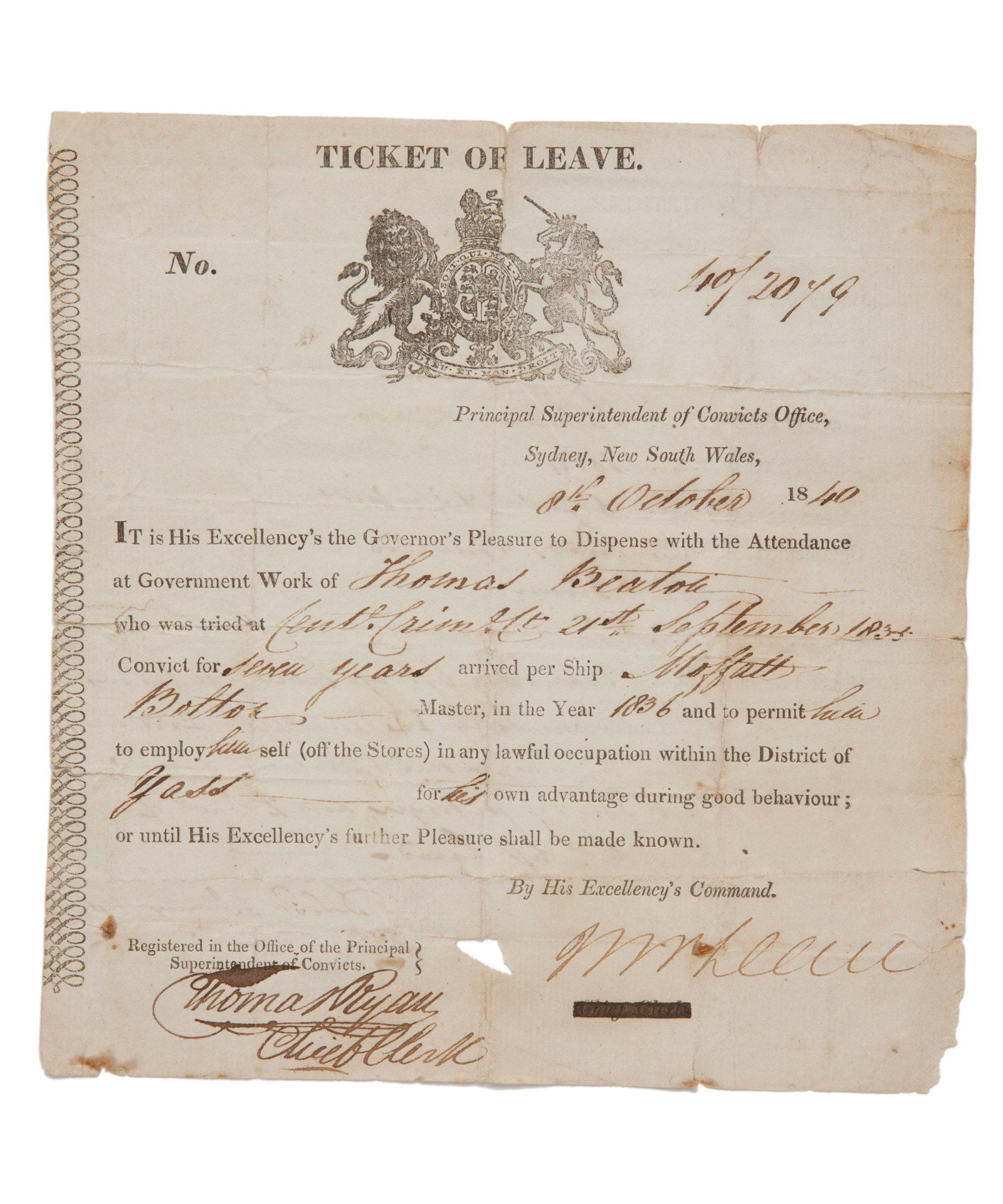
Convict Sydney
Ticket of leave
This Ticket of Leave granted to convict Thomas Beaton shows how well-behaved convicts could reduce the length of their sentences
Related
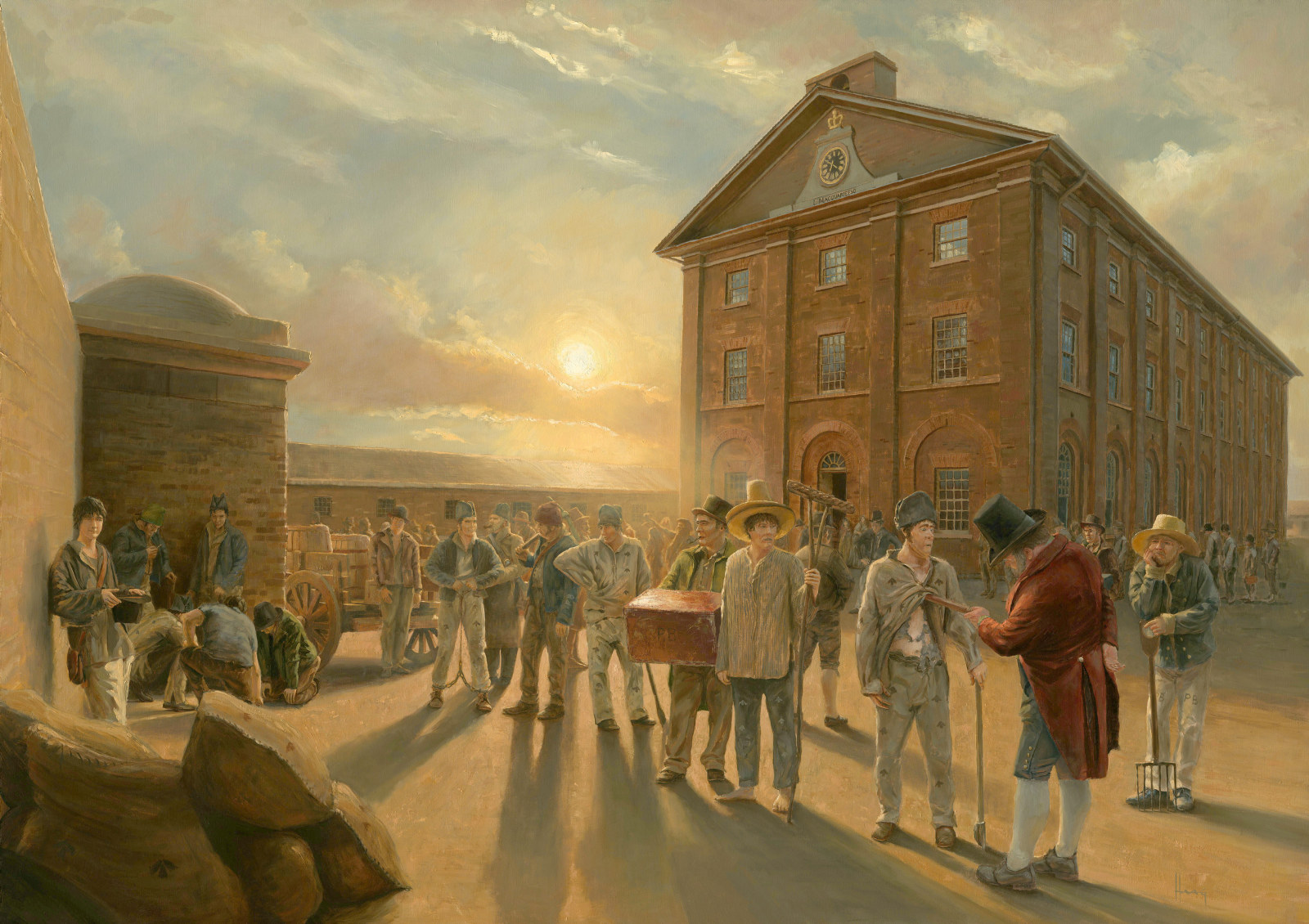
Convict Sydney
Convict Sydney
From a struggling convict encampment to a thriving Pacific seaport, a city takes shape
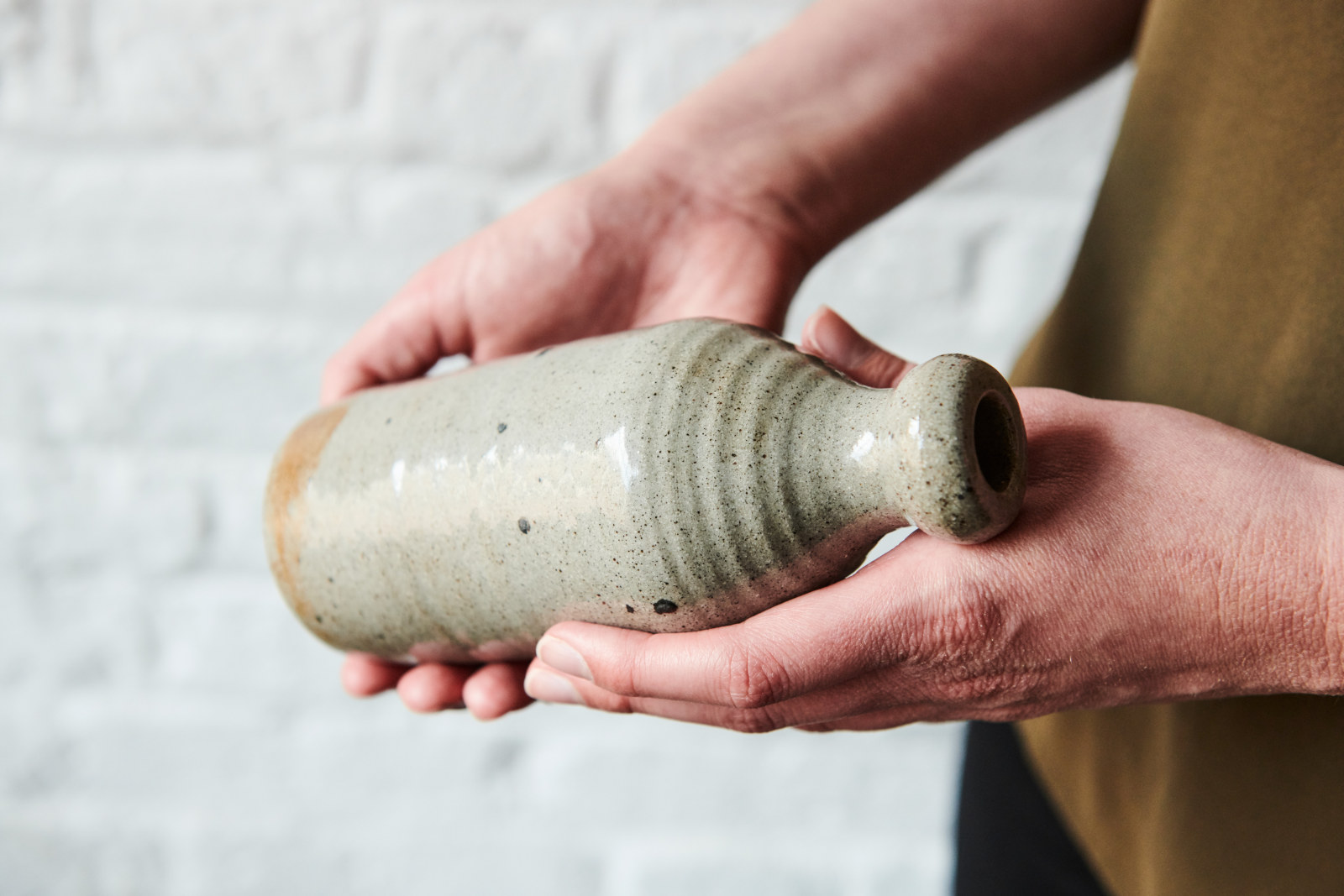
Learning resources
Explore our range of online resources designed by teachers to support student learning in the classroom or at home
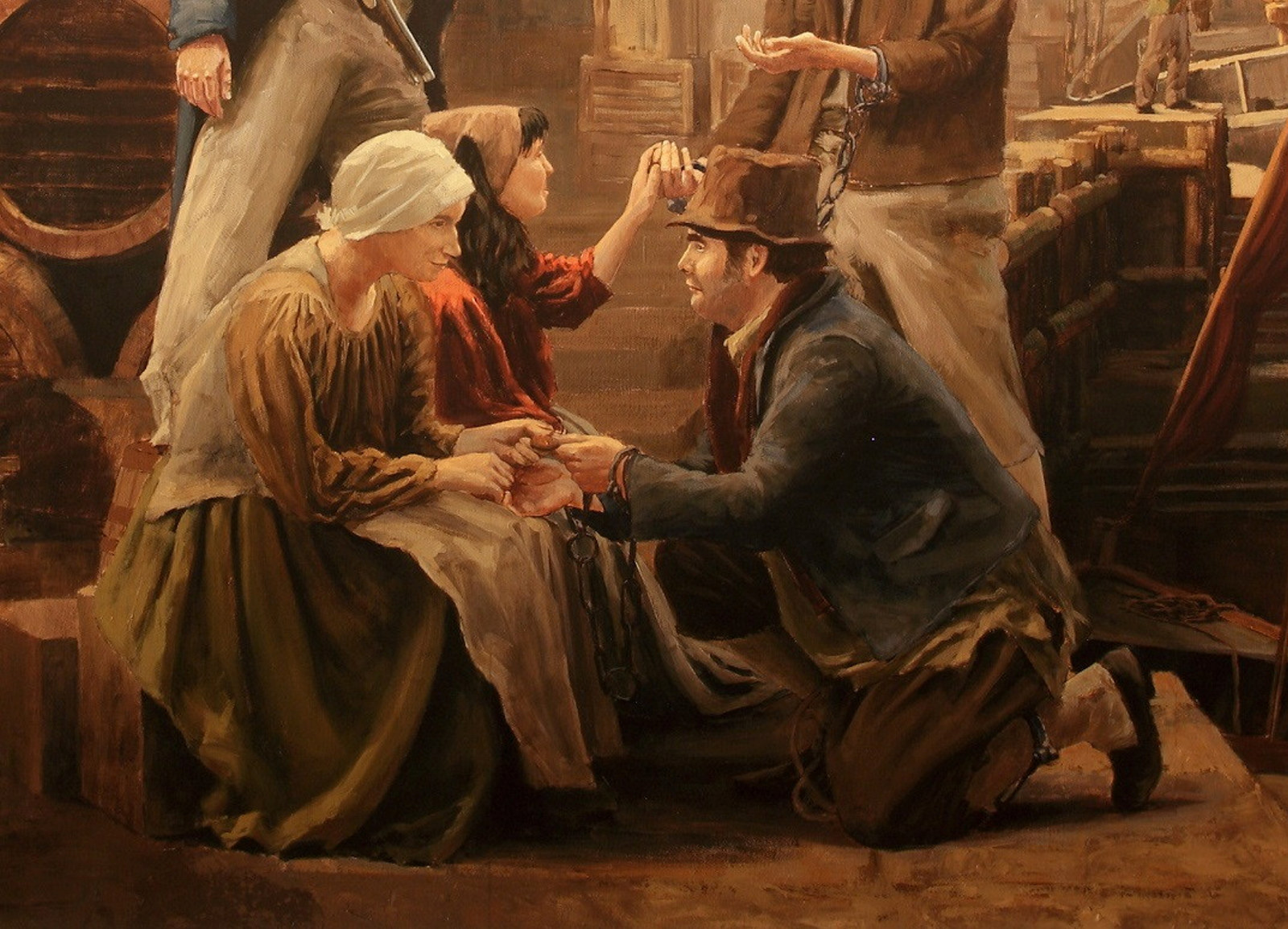
Convict Sydney
What are convict love tokens?
A convict love token is a coin that convicts gave to their loved ones before they were transported to NSW